Image Colour Changes and Experimentation I wanted to initially change all of the images to black and white . Then I realised i could change individual layers to black and white, I thought this gave the images a new range of depth and visual interest. I selected the individual layer that I wanted to edit - Then I went to image - adjustments - black and white- then moved the colour sliders up and down until I got my desired outcome, which was a light grey back ground with the wood being darker and being lighter in the lighter parts to create more of a contrast.I also tried doing it the other way around with the same image. The exact same process on a different layer. I decided that i didn't like this image as much as the other one it just didn't look right to me. The contrast of the brown wood on stark grey background looks underwhelming. They look like two purposefully different images when they are actually meant to blend and flow together. These images together in this colour pallet just creative unwanted visual noise which confuses the audience because they are just drawn to the contrast of the colours not the actual image itself.
In this image i am moving around the colour settings so that there is more contrast between the light and dark of the wood in this image. In the first image they were just set to the factory black and white settings so i changes them to have my desired out come. I fell like it makes the image look more interesting and the left eye blends effortlessly into the wood because the pupil of the eye is the same tonal colour pallet range.
I have decide that for this image the face is to colour full it created imbalance in my photo the face shouldn't be as vibrant and it should be a cooler colour pallet to complement the b&w wood structure.
This image in balanced nether of the images over throw the other there is no direct focal point in ether it is just left to the viewers interpretation. The main tool i used was the vibrance slider moving the sider down to -56 gave my desired image composition. This again was through using the image - adjustments tool . There is still the cool blue tones coming through to give that image the need colour but they are muted.

Another tool that i used quite frequently on the original face images was the levels tool to create more depth with in the eyes so that they stood out and didn't get lots within the images different layers.

Again using the same black and white process with the wood from the images adjustments black and white tool and then sliding it to create the desired b&w tonal look.
Again the vibrance tool to decrease the vibrance of the image to put a real focus on what the image is trying to portray rather that the initial combination of broken wood and a face. This vibrance decreases mean the image is seamless and creates a dimensional feel that you can look into the image in different layers but then you zoom back out it still looks like all one image.
For me when editing my photos that I had created the vibrance slider created the most desired outcomes then it came to editing the actual face images i used this tool on all of them. It created the colour pallet that i wanted to complement the black and white wood without becoming a black and white image in its self.

Category Archives: AO2 Explore Ideas
Filters
Final images – Portraits
These are my best images from throughout the portrait projects which I will be sending to be printed off.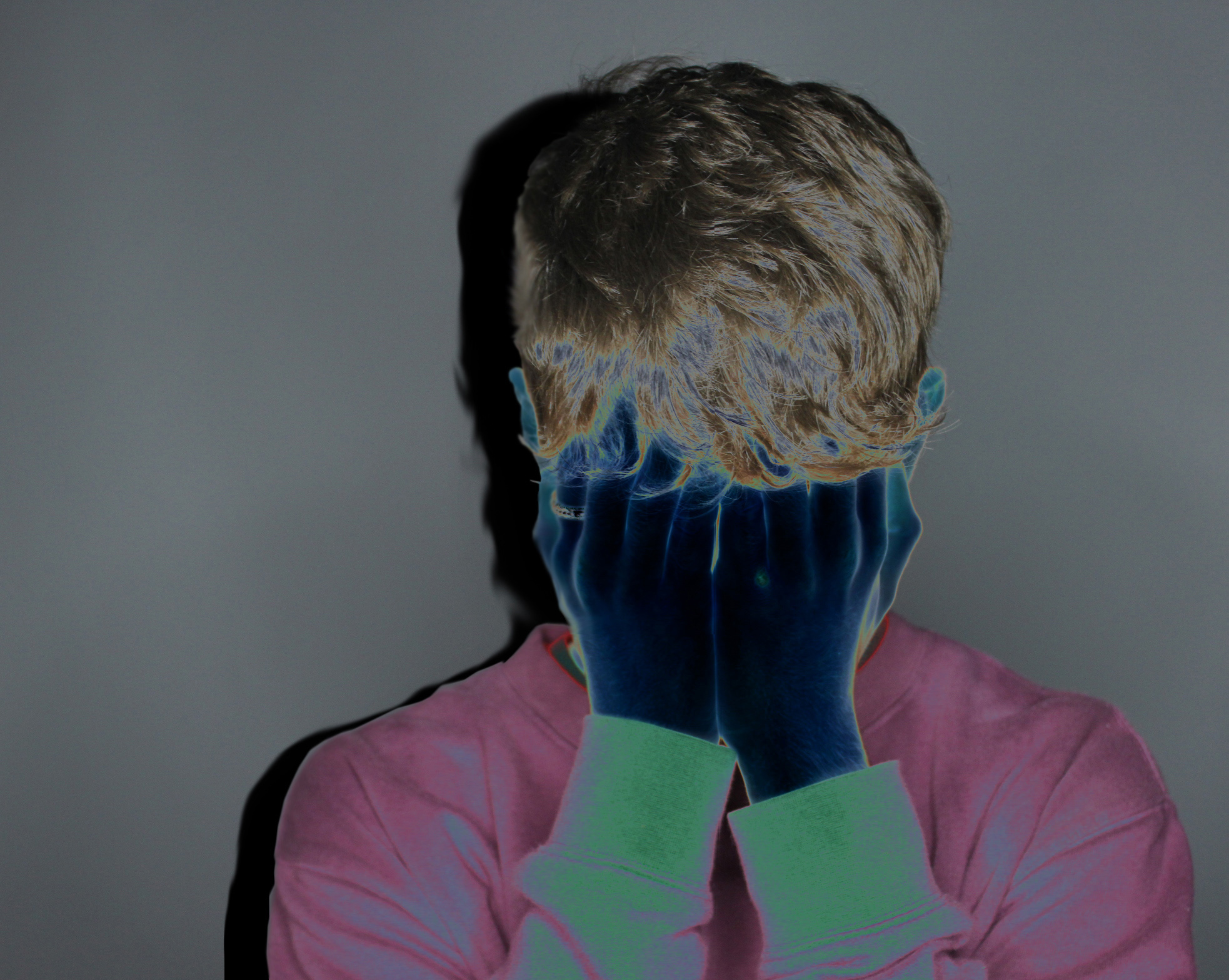
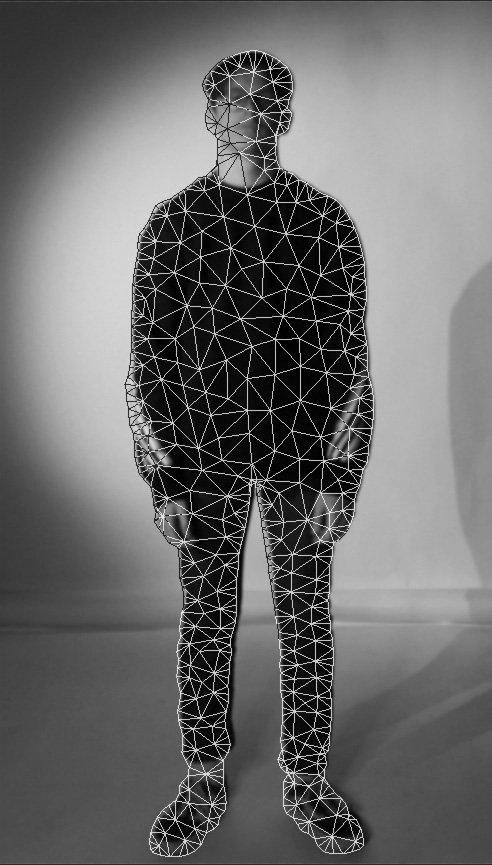
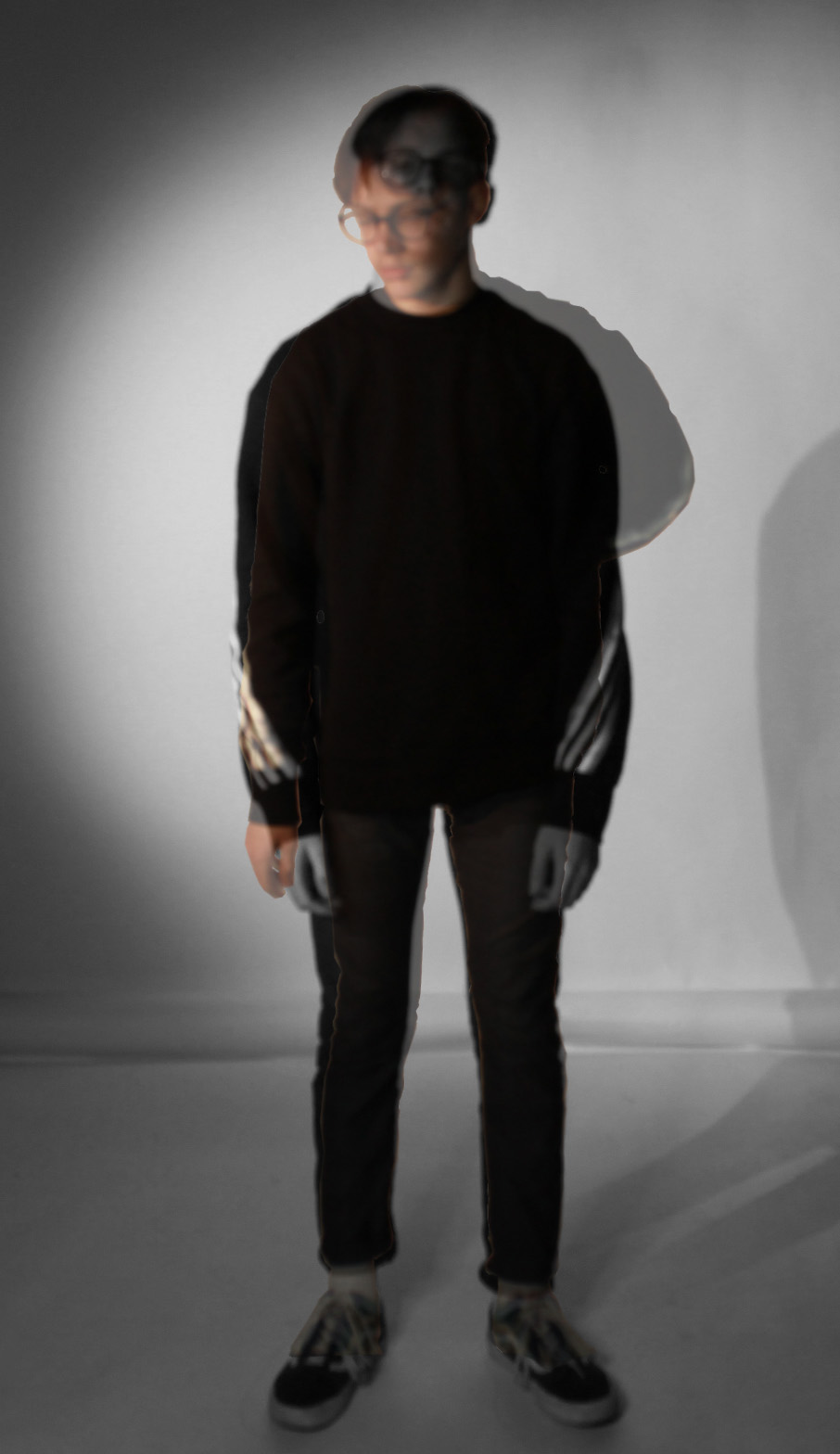
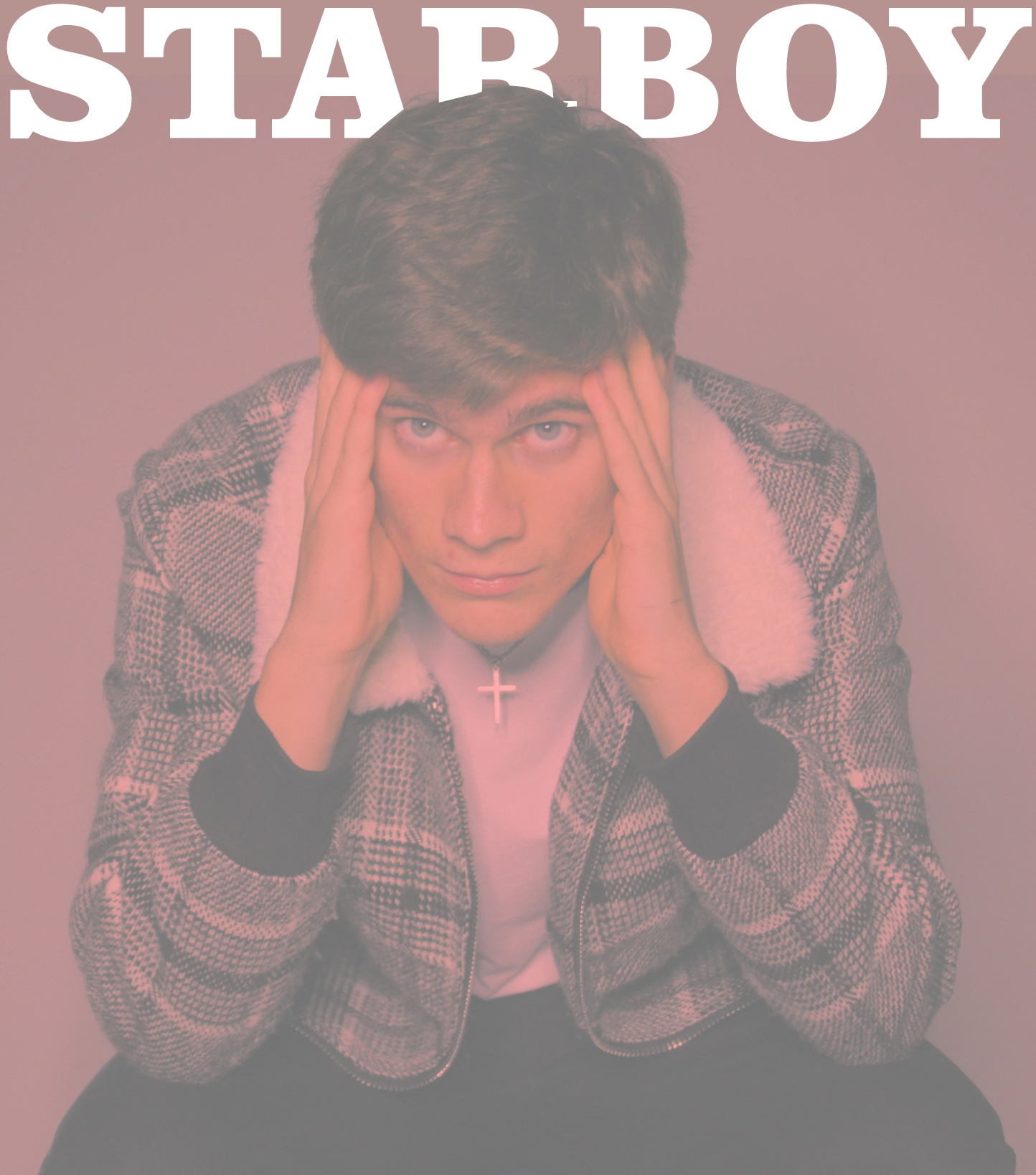
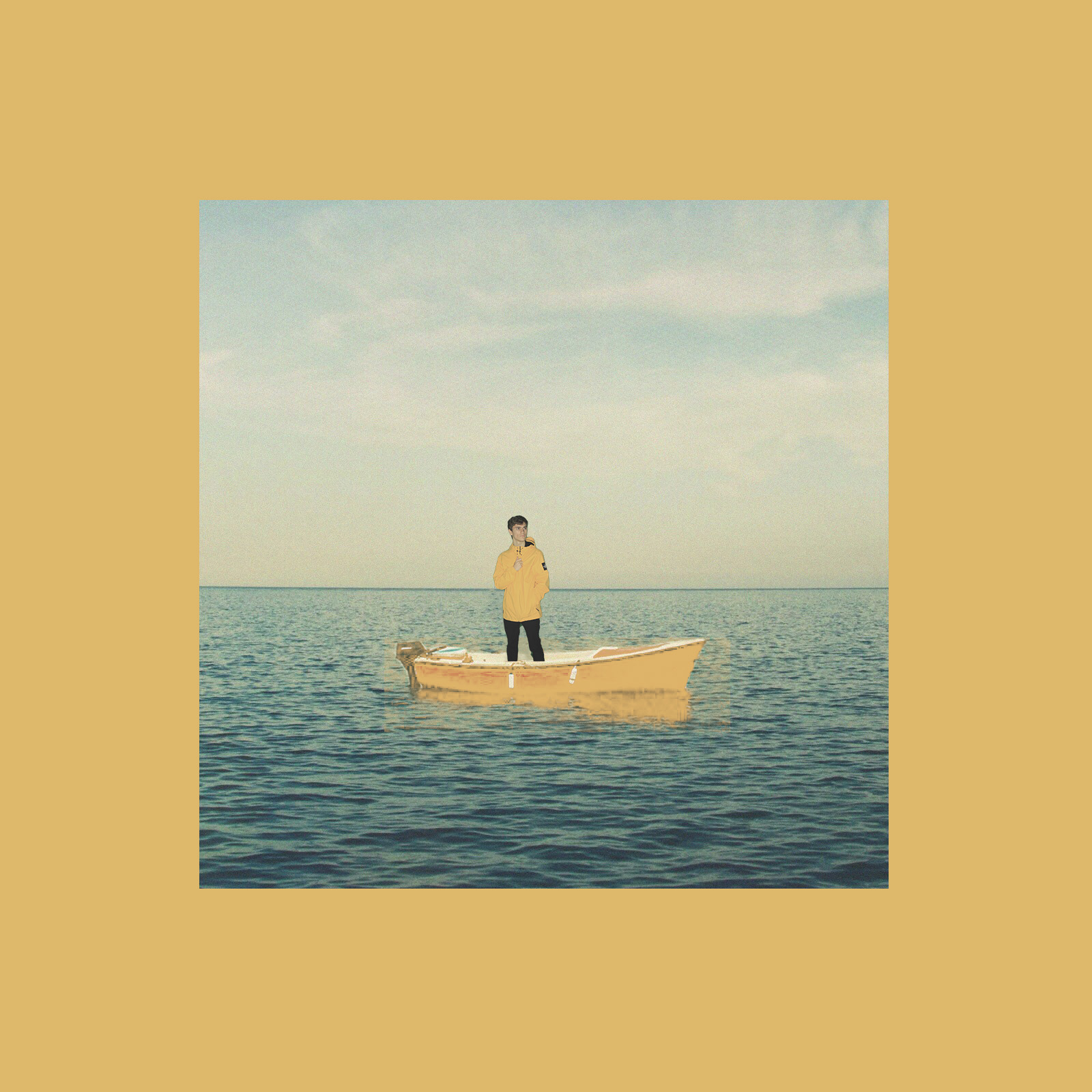
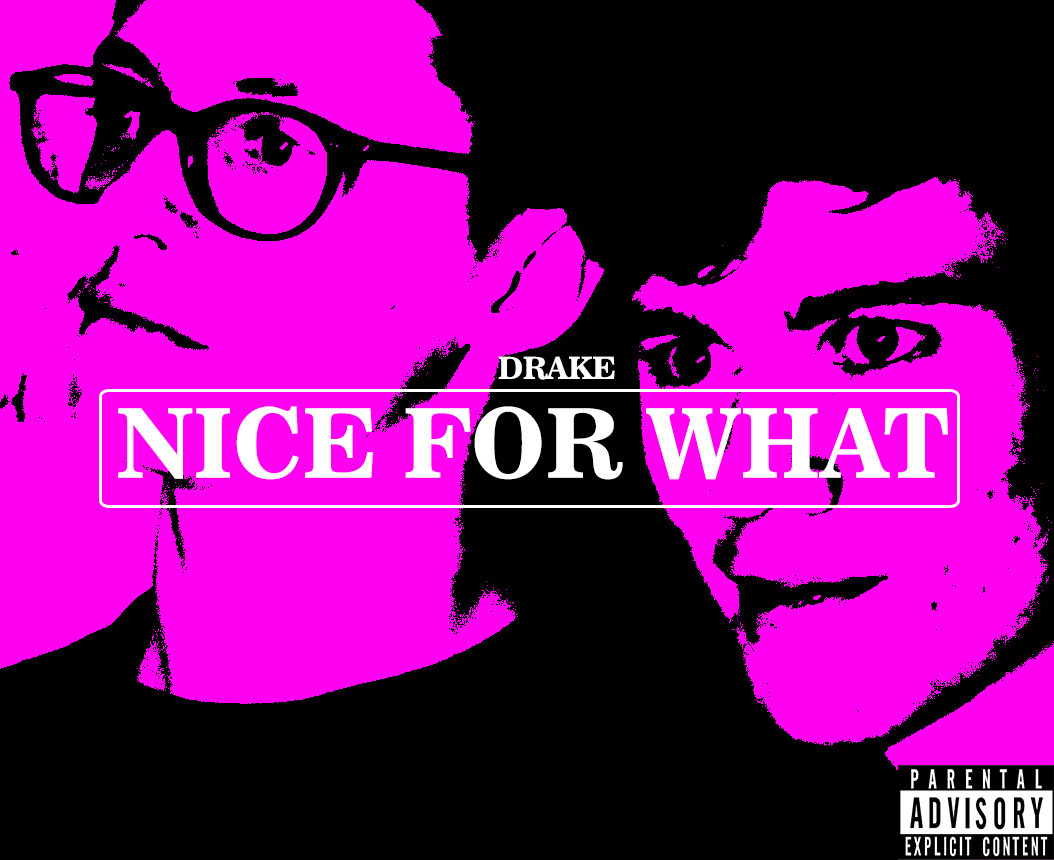
Identity photo shoot
These are my best photos from the two photo shoots which I did for Identity. I focused on personal identity and emotions, this resulted in a lot of double exposures to help portray multiple emotions in one image.
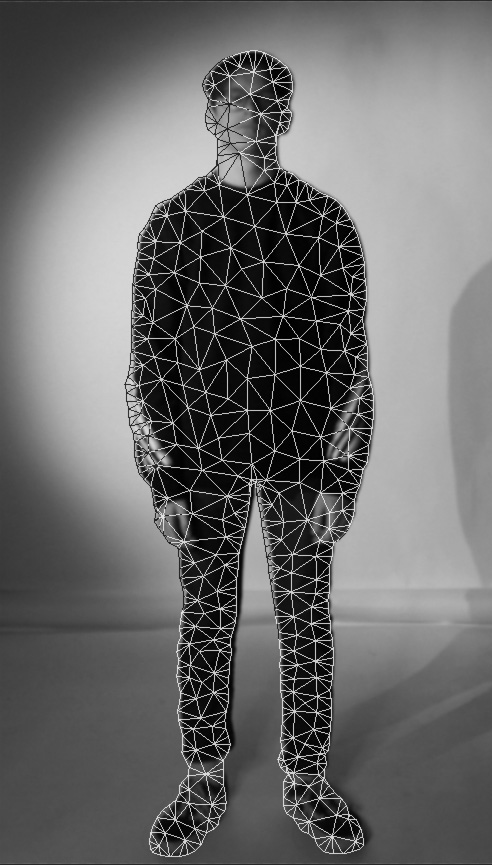
This image wasn’t actually planned, I was editing a photo of my friend Alex and I needed to align two photos so I used the puppet warp tool to do so. When you use this tool it displays triangles to show proportions across the photo, I really liked the look of these shapes so I saved this work in progress version and decided to use it. This is the photo I was editing when I accidentaly created the last one. I cropped out a second photo of my friend standing in the same spot, but in a different pose and placed it on top of the first photo. One of the photos is in black & white, whereas the other is in colour, this helps portray the different emotions in the two layers.
This is the photo I was editing when I accidentaly created the last one. I cropped out a second photo of my friend standing in the same spot, but in a different pose and placed it on top of the first photo. One of the photos is in black & white, whereas the other is in colour, this helps portray the different emotions in the two layers.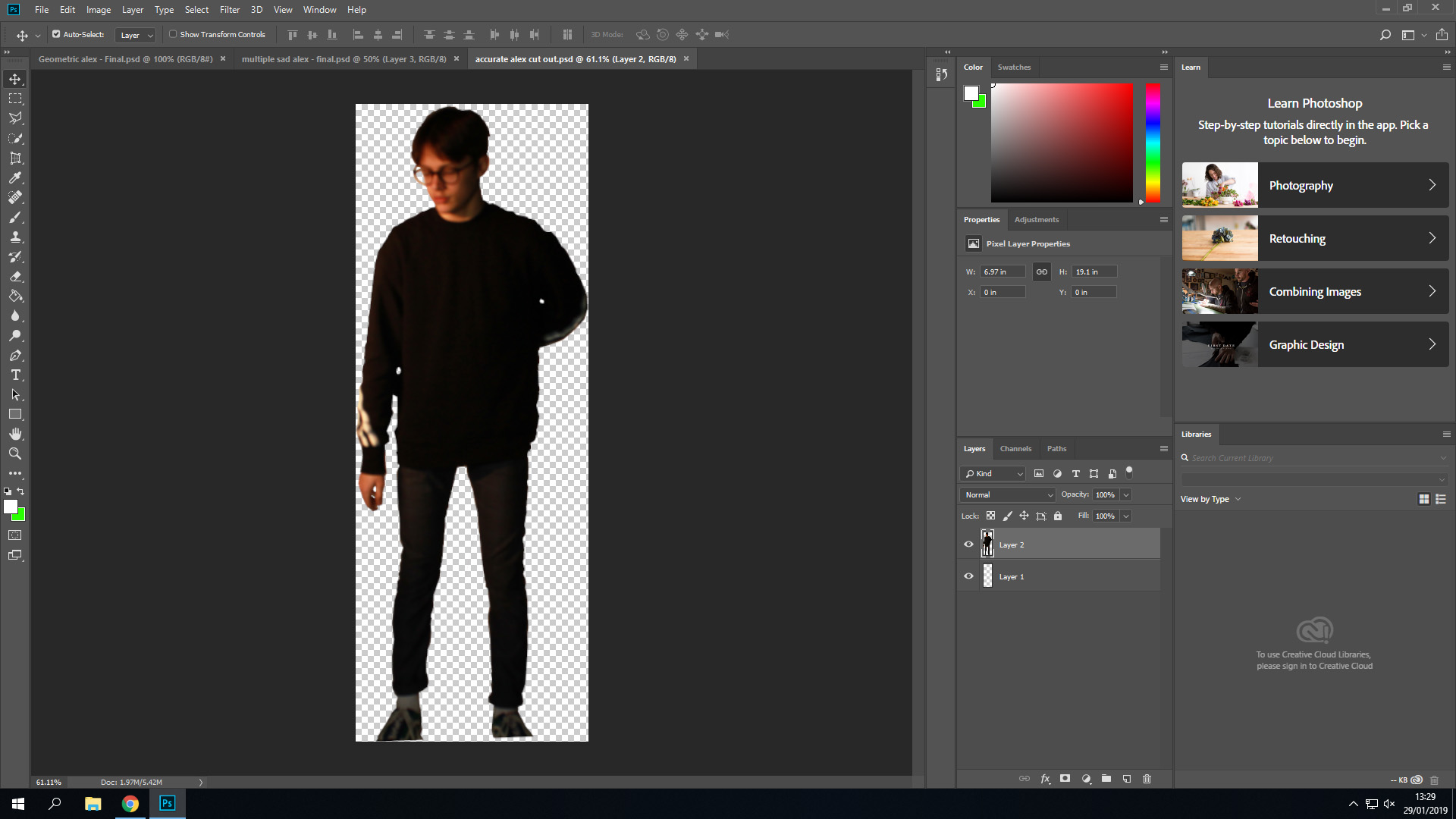 This is a work in progress screenshot of when I cropped out a picture of my friend, before pasting it on top of the other one.
This is a work in progress screenshot of when I cropped out a picture of my friend, before pasting it on top of the other one.
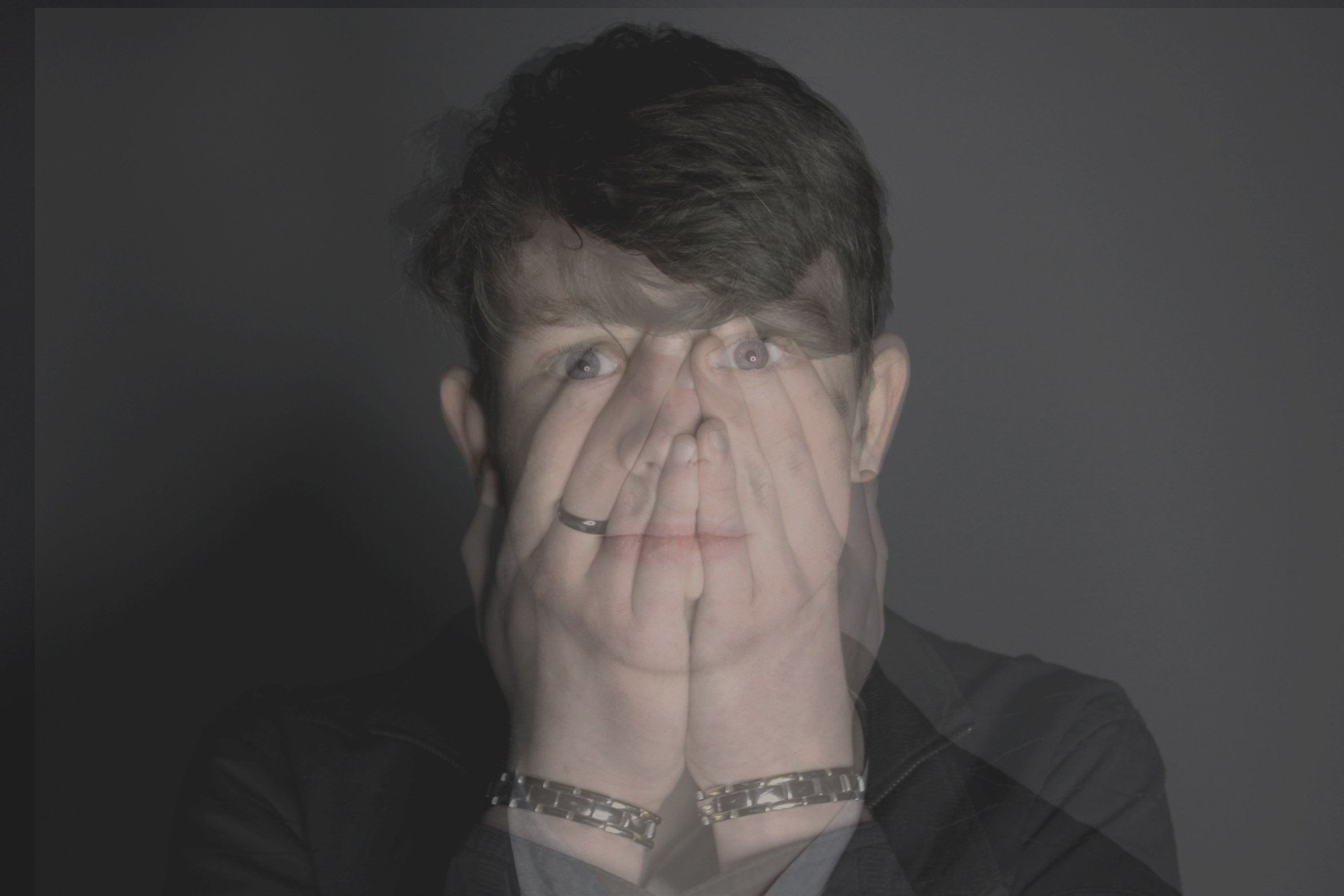 This is another multiple exposure image, I took two photos of my friend standing in the same spot. I’m not too happy with the angle of the first one as ideally I wanted it to look more vulnerable and sad, but the image still works. It shows how we hide emotions, outside we don’t show any signs, but sometimes there is a problem deeper within.
This is another multiple exposure image, I took two photos of my friend standing in the same spot. I’m not too happy with the angle of the first one as ideally I wanted it to look more vulnerable and sad, but the image still works. It shows how we hide emotions, outside we don’t show any signs, but sometimes there is a problem deeper within.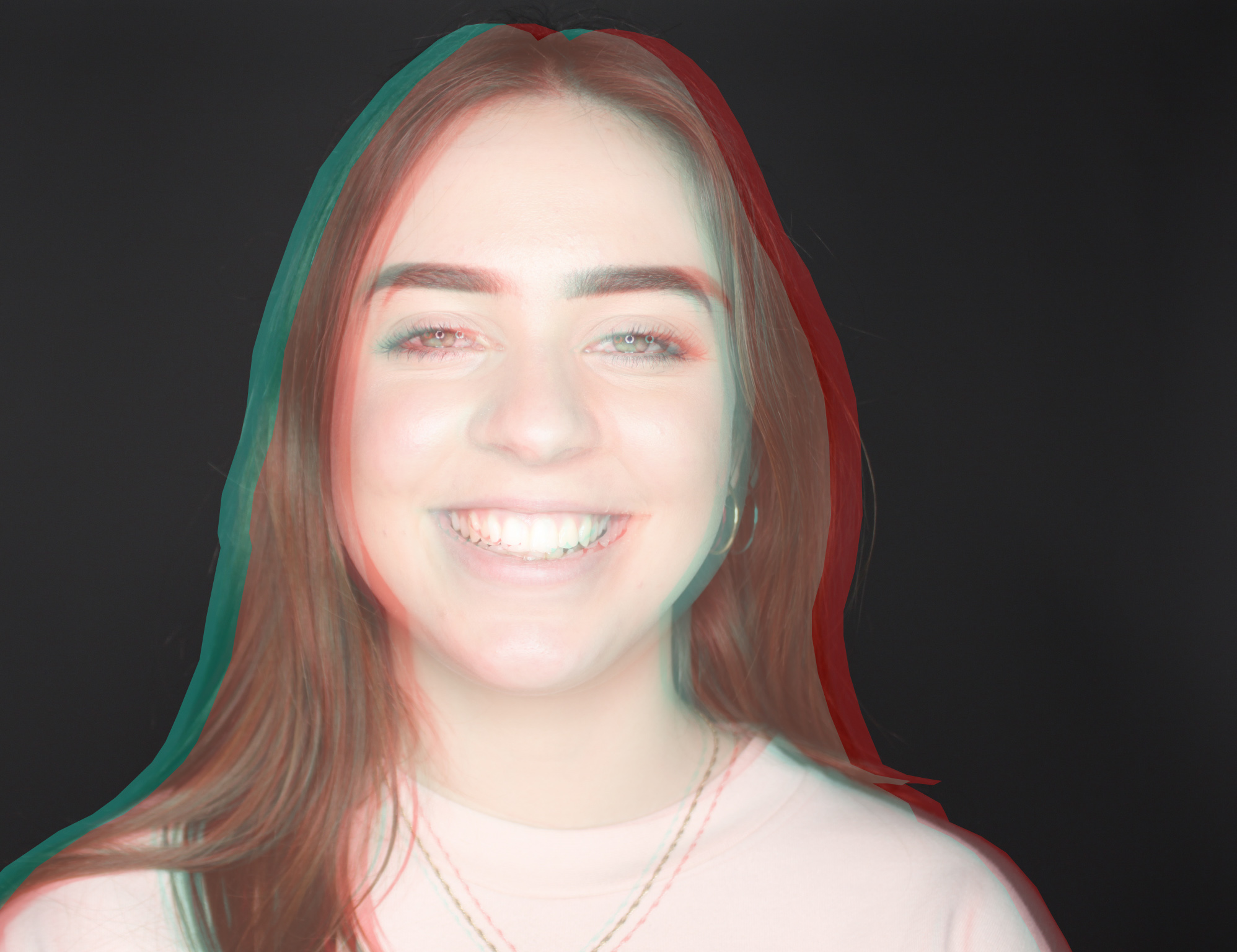 This is a lighter take on the ’emotions’ theme, its about expressing hapiness. I cropped out the outline of my friend and overlayed blue/red colours over two copies of it, them lowered their opacity and shifted them to the sides. This gives an old school 3D movie look, and it helps widen the smile and eyes, which are connoted with more hapiness.
This is a lighter take on the ’emotions’ theme, its about expressing hapiness. I cropped out the outline of my friend and overlayed blue/red colours over two copies of it, them lowered their opacity and shifted them to the sides. This gives an old school 3D movie look, and it helps widen the smile and eyes, which are connoted with more hapiness.
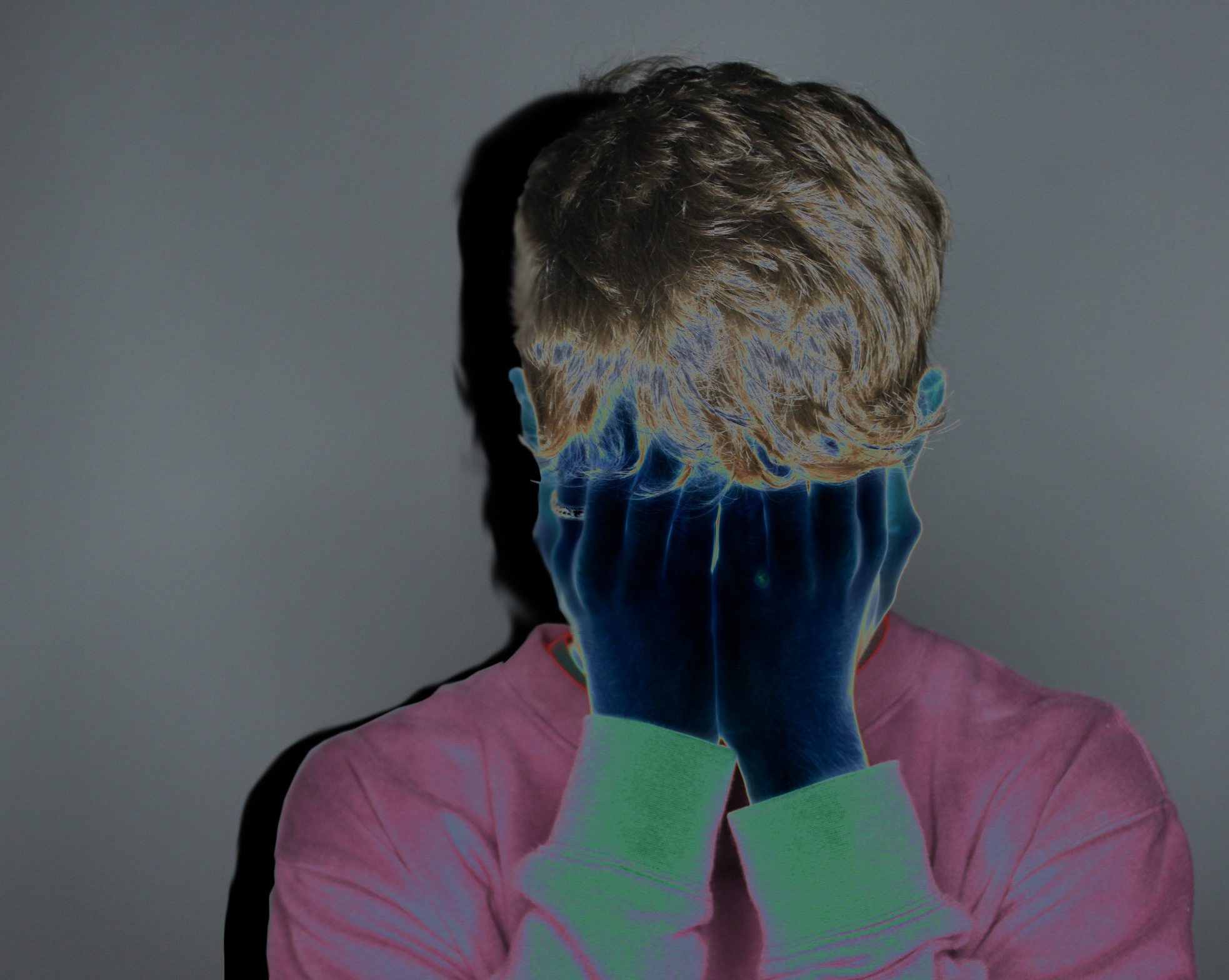 This final image is a photo I took of myself, I tried to create a similar effect to the one in image 4 on this post, but my hands were blending in with my hair too much so I solarized the photo. This helped exaggerate me holding up my head with my hands, which portrays more emotion. I also created a copy of my outline, made it black and put it a layer behind to imitate a shadow, this adds darkness into the photo, which also connotes sadness.
This final image is a photo I took of myself, I tried to create a similar effect to the one in image 4 on this post, but my hands were blending in with my hair too much so I solarized the photo. This helped exaggerate me holding up my head with my hands, which portrays more emotion. I also created a copy of my outline, made it black and put it a layer behind to imitate a shadow, this adds darkness into the photo, which also connotes sadness.
My Final Outcome:Separated By Four-Mock:Identity and Place
My final photos were heavily influenced my Barbara Peacocks-American Bedroom. I wanted to create a series of photos of people in their bedrooms in order to link to the mock exams theme of identity (the person) and place (their bedroom). I wanted to empathizes how people use their bedroom as a place to express their self, but I also wanted to tie in the theme of lack of identity by blurring out facial features. I wanted the bedrooms not the peoples faces to be able to describe the person, as I believe that we dress to impress, but our bedrooms are where we show our real self. I want the viewer of my photos to be able to construct an idea of the person through the materialistic items that are in their room or on them. Nowadays we hold such value to materialistic goods, I feel that our personalities are created round the things we own, e.g our clothes and houses. For instance people with a room with very little furniture in it, shows signs of poverty or show signs of a minimalist life. Or someone with very little to no portraits in their room shows signs of loneliness or lack of family, rooms tell a lot about a person.
NC:
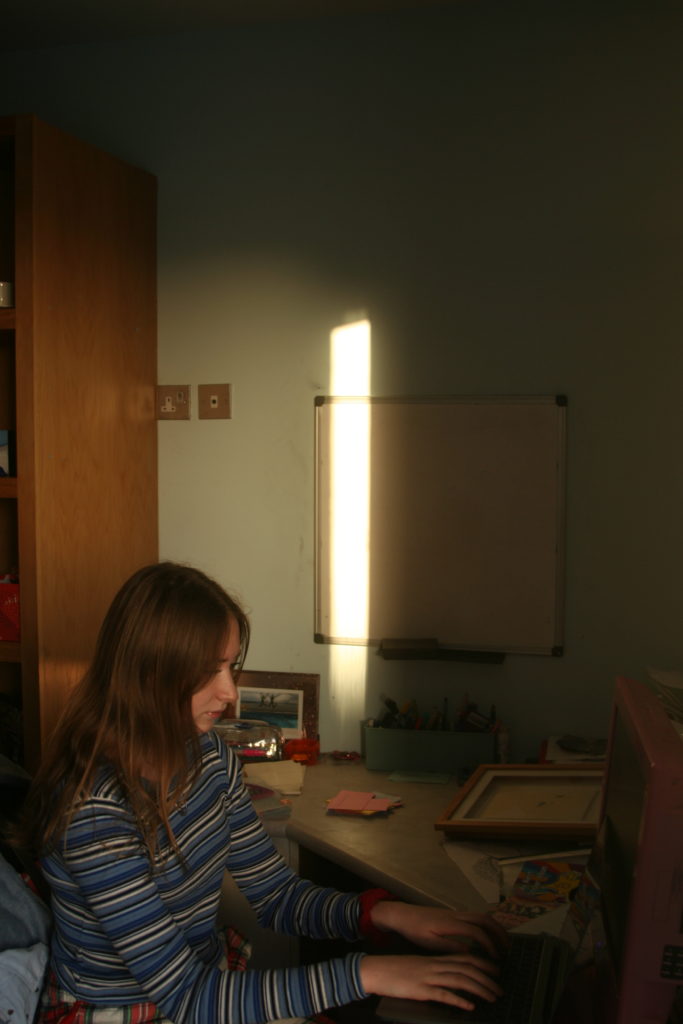
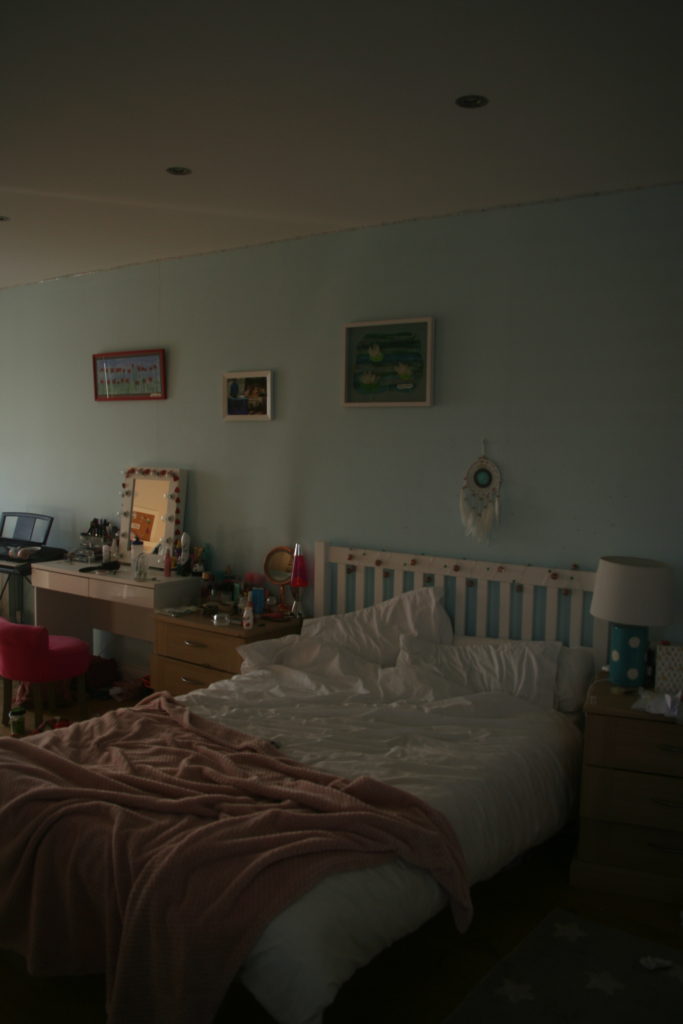
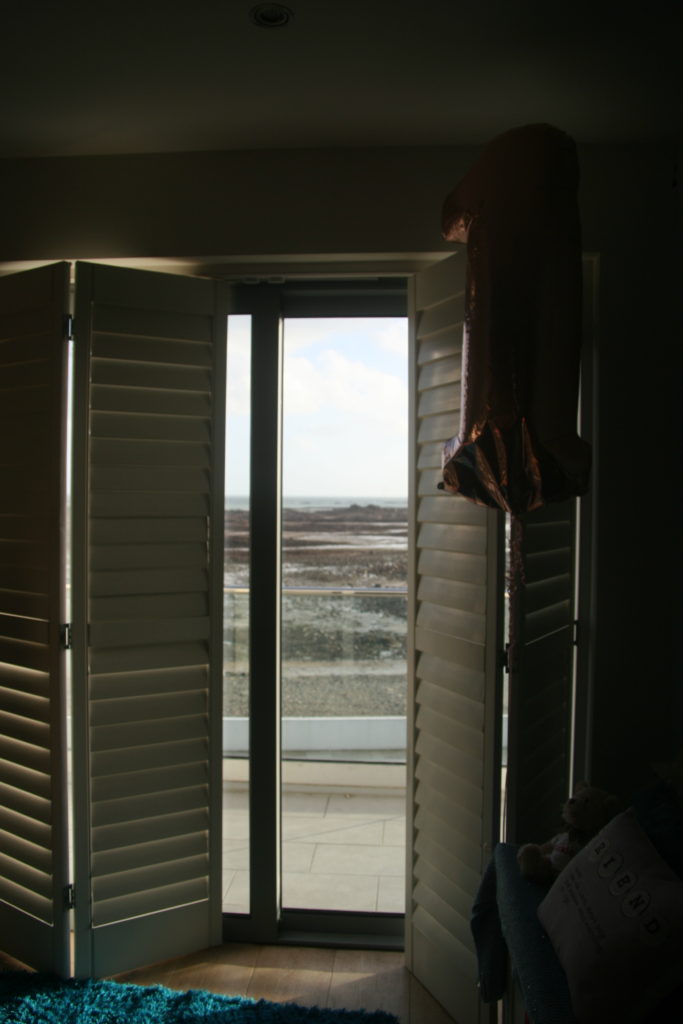


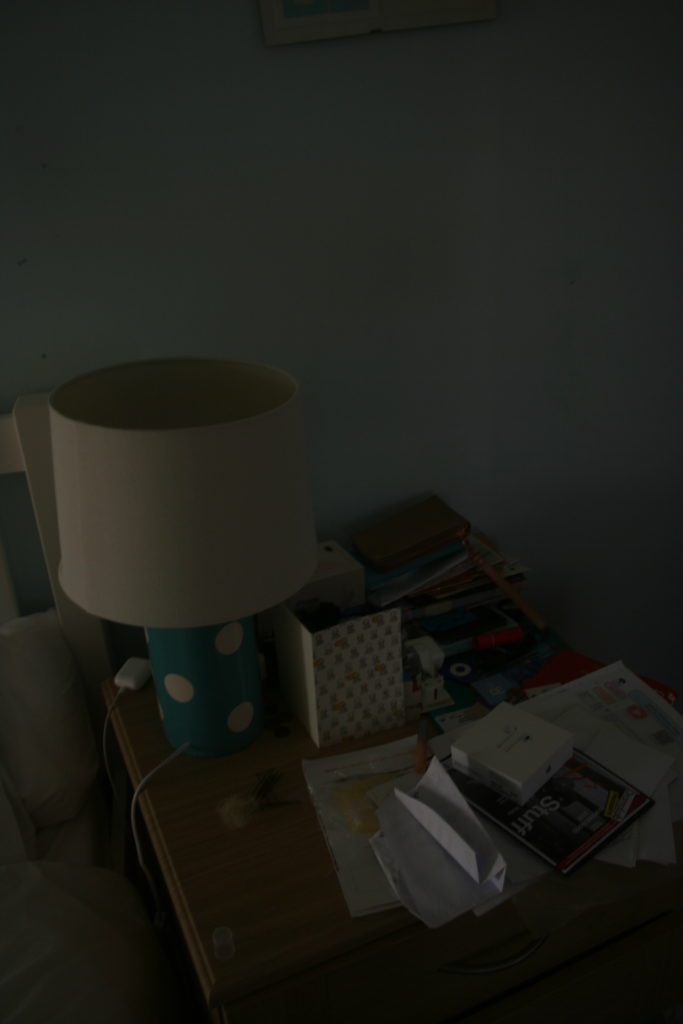
I took pictures of 3 different peoples rooms over the build up to the exam and these are the images that turned out the best and I chose to use them in my final pieces. I created a porfolio for each persons room, including a picture of them in their room and several items in their room. I wanted to home in on personal touches that people put in their rooms such as the art work, family photos, toys, laptops, lego, all these create an idea of the person thats room it is. I kept my pictures in colour as I wanted to show the raw and natural beauty of peoples bedrooms and how they reflect our inner and true self, in our room we are free from judgement, we don’t have be afraid of being laughed at or social rejection. When in public most people experience social desirablilty bias and they live to only be accepted by others and not by themselves, their rooms are a place to escape this feeling to fit in and to be black and white, they can be as colourful and as different as they want. In my concept plan I talked about Goffman’s concept of ‘The Representation of The Self in Everyday Life’ and how he believes we have a ‘front’ and a ‘back’ self. From these final pieces I represent both of these self’s as I have a picture of the person, which is the ‘front’ self the one that the public sees and their room acts as their ‘back’ self, the one they conceal from the public eye.
TB:

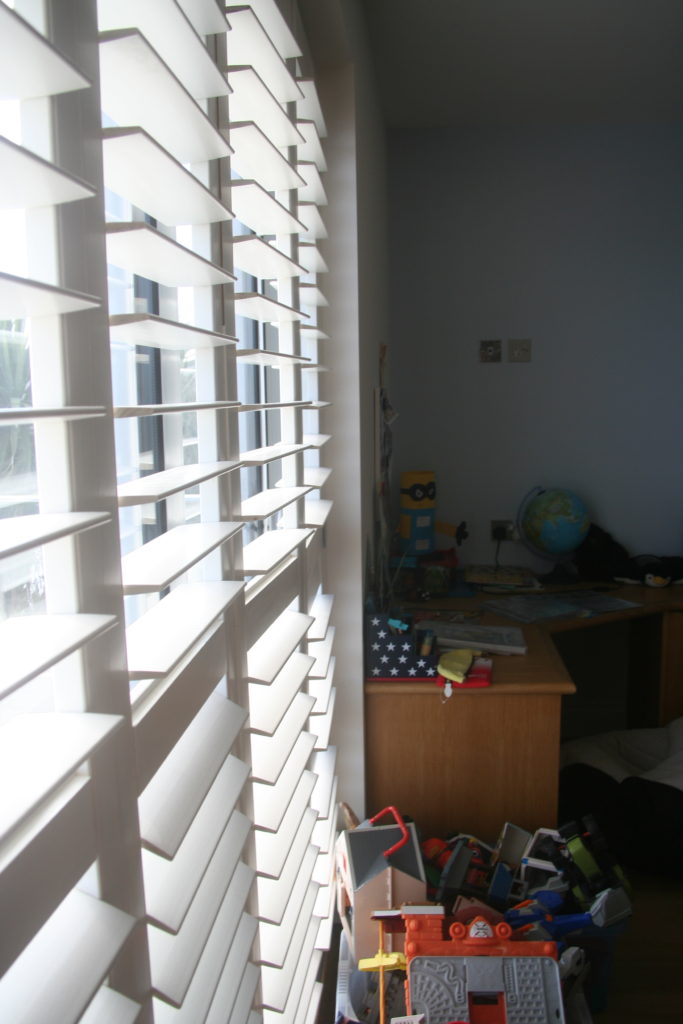
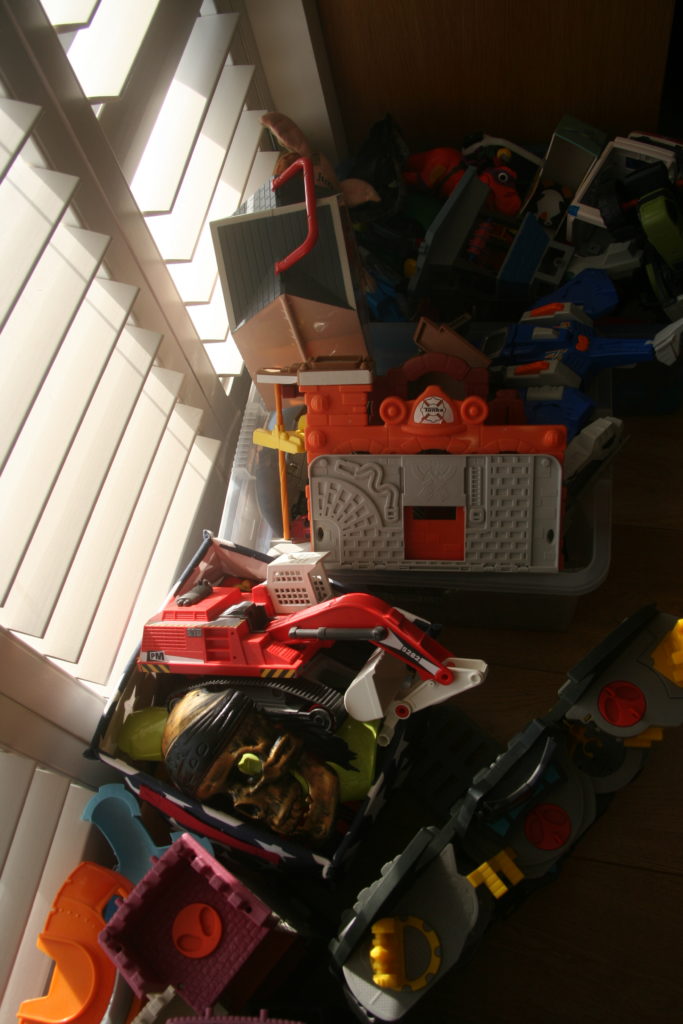
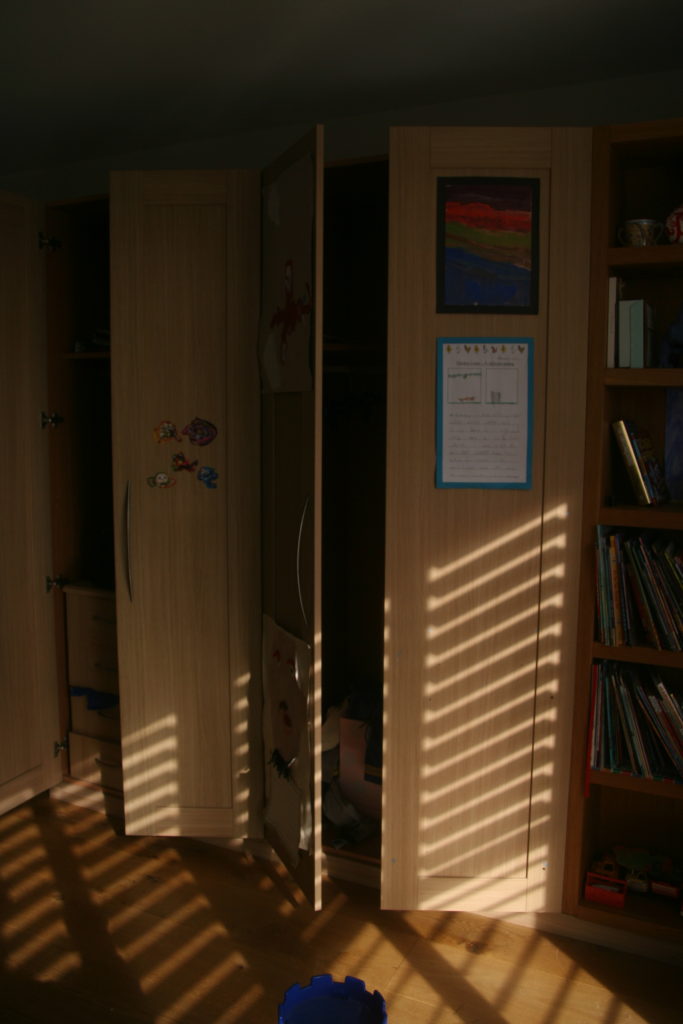
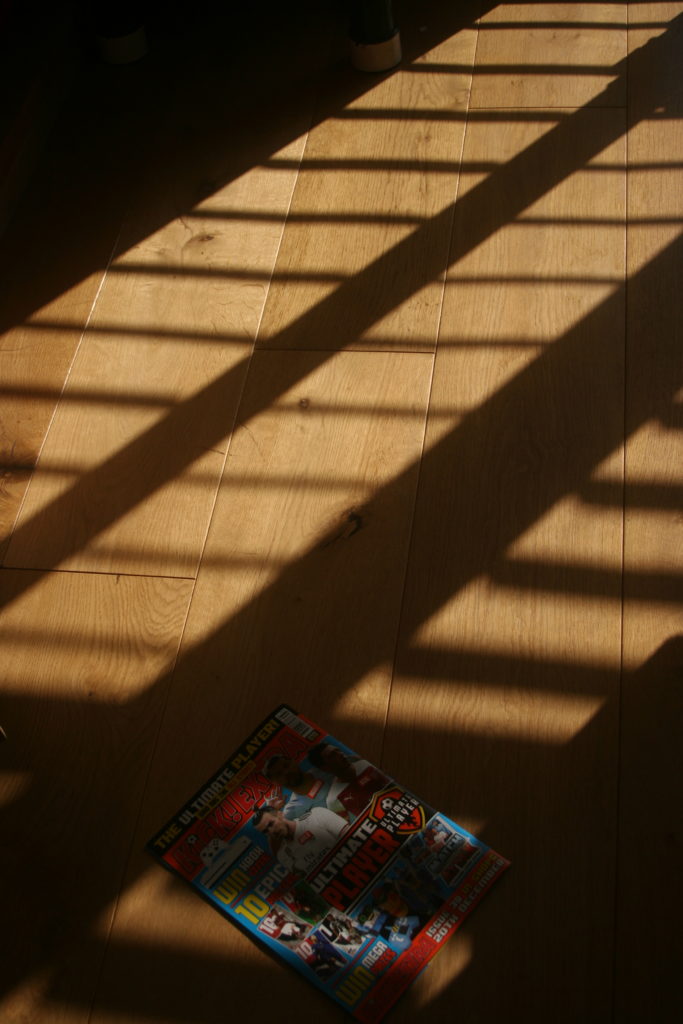
Once my picture have been printed I am going to mount and frame them on black card. In between each image there will be a border of black card this represents the strcuture of a house and how we hide behind these four walls, it’s where we feel safe. I wanted to express how walls (the black lines between each photo) are the only thing in a house that separate us from each other and empathizes how close we all are from each others true self, just a wall away. Similarly to Peacock’s work, mine has focus on colour and identity, we both focus on the vibrant colours of peoples room and the things they put in them to make them personal to their own identity, whether it’s in America or Jersey we still are all human and all have a private place that is special to us. As well as that I focused on creating a narrative for the person but without speech, simply through images of their rooms. For instance the Peacock photo I analysed created a story of a lonely alcoholic who is addicted to nicotine and works in construction. Similarly my pictures tell a story, for example in my first set of photos their are items such as make up, electronics, a mirror, a dressing room table. From this information, without seeing the picture of the person, you can gather that they are a young women as they are interested in making themselves look pretty and they have the latest techonology.
LB:
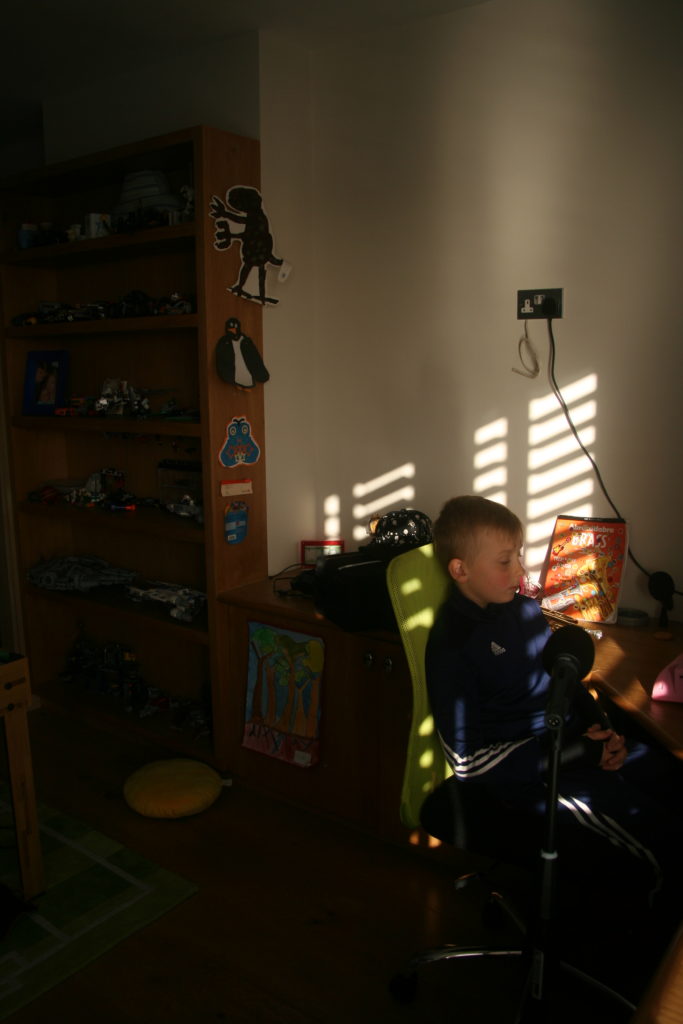
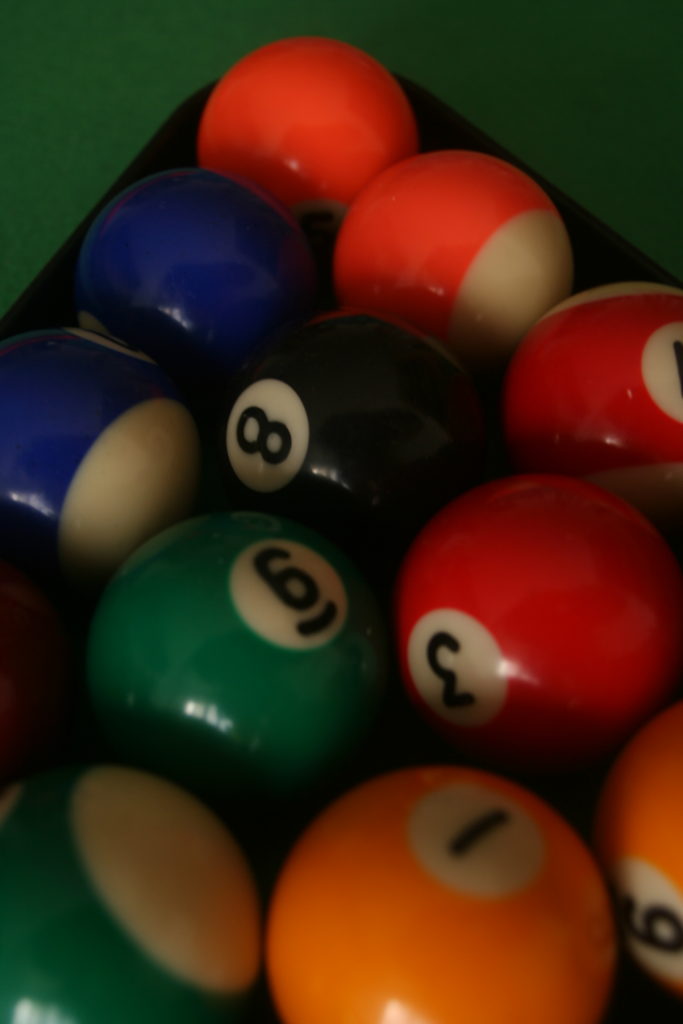

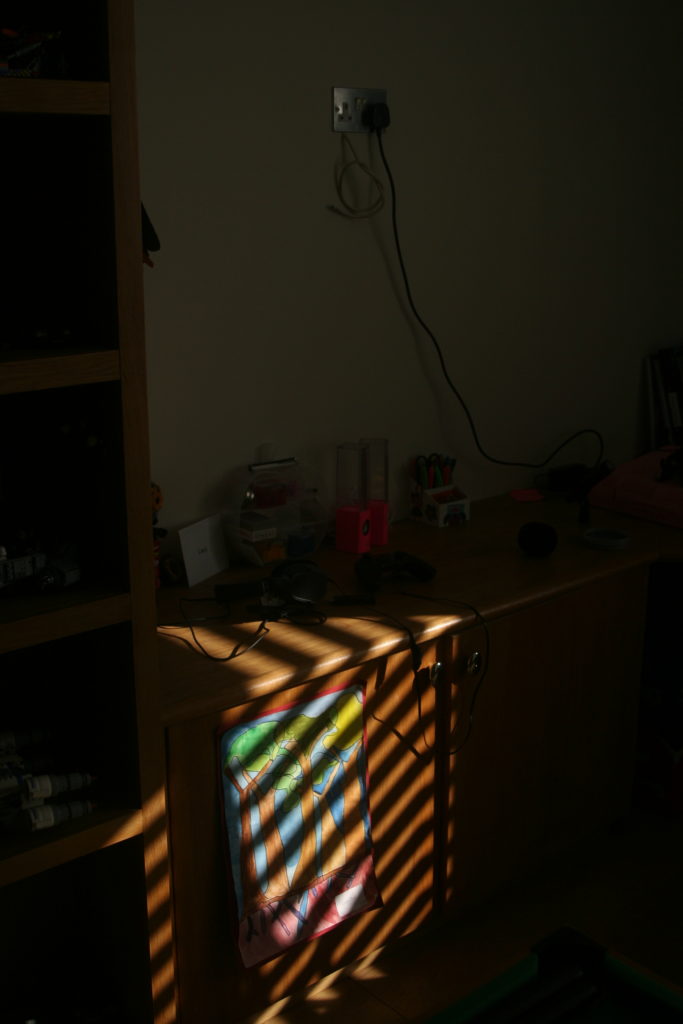

Identity – Mihaela Ivanova
The last photographer I will be looking at is Mahaela Ivanova.
Mihaela Ivanova is a Bulgarian photographer who experiments with simple conceptual shots and black and white series. The works below focus on the concept of identity, with the subject holding a part of a portrait of a different person, whether it be the eyes or the mouth, in front of their own face, hiding their identity.
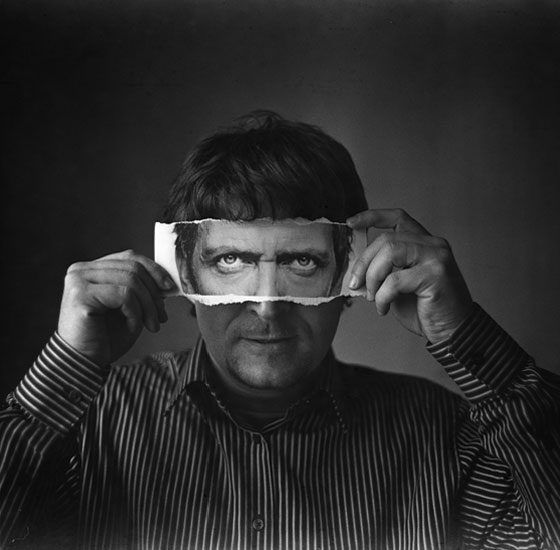

Contact sheet:
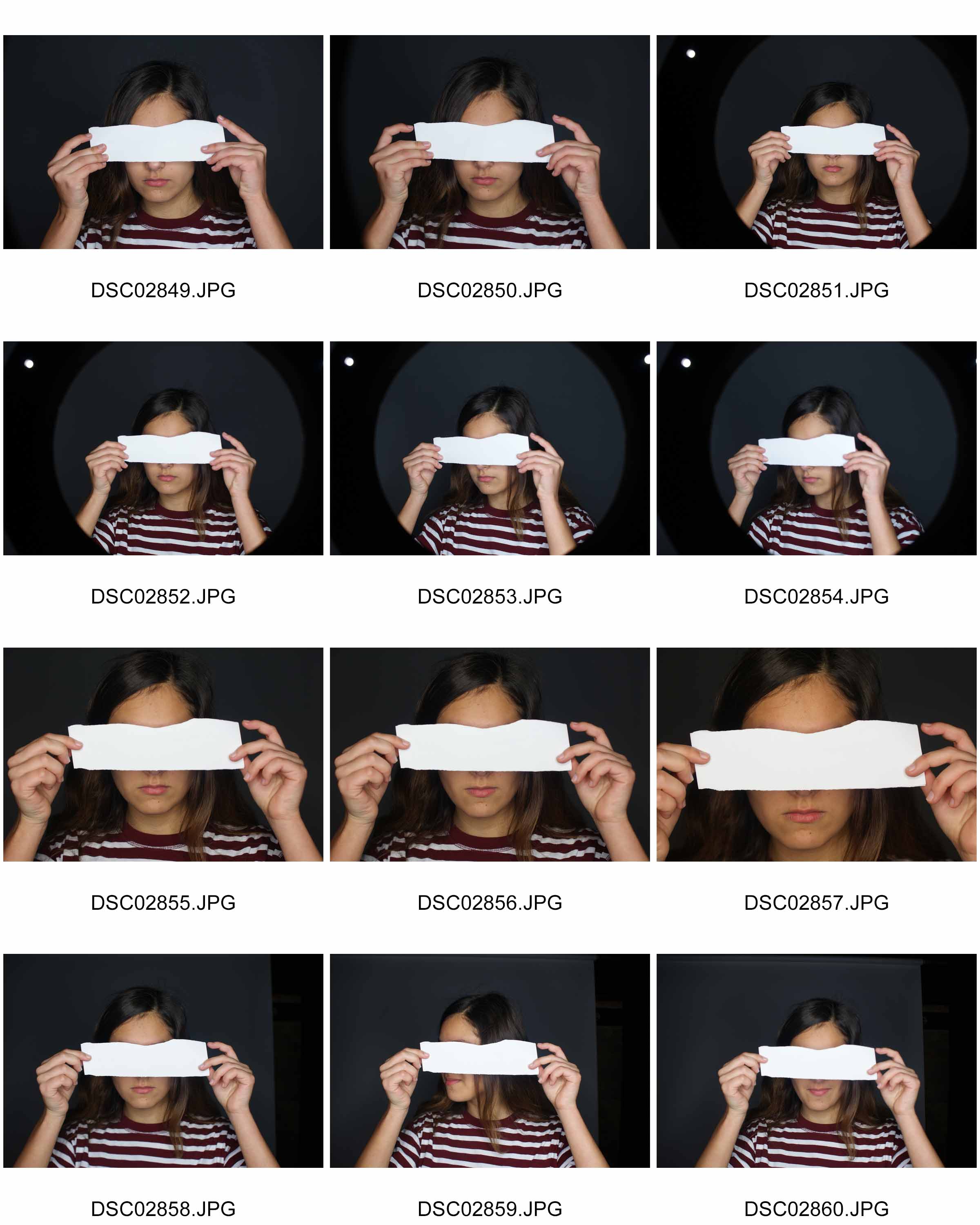
In the pictures I took, since I wasn’t able to get a picture of another person’s face in time for the photo shoot, I instead used a blank piece of paper for the subject to hold over her eyes, and will be photo shopping another person’s face into that piece of paper to create the look of Mihaela Ivanova’s work. I told the subject to look directly into the camera with the ripped piece of paper over her eyes to get the right pose, which resulted in these photos.
Chosen edited picture:

How I did it:

I started off by choosing an image which I could use, it being this one.

I then went and chose a picture of myself and copied half of my face, and then pasted it onto the picture where the stirp of paper would be. I then reduced the opacity and erased the excess image around the strip of paper. I got rid of some of the image on the strip of paper around the edges to try and create a ripped effect, as in Ivanova’s work. I also brightened my eyes using the dodge tool to make them stand out more.

Since i had pasted a picture over the original image, I covered all the shadows, so I had to implement them in myself to give it more of a 3D look, as if the piece of paper with the image on is actually there in her hands. I did this by using the eyedropper tool to take the colour of the image underneath her fingers, darkening the colour a few shades to almost a black, and then taking a soft brush tool and drawing it on where the shadows should be.

To make it look more natrual, I reduced the opacity down to 30%.

To clean it up and to make the shadows actually underneath the fingers and not on top of them, I carefully erased the excess shadows which were on top of the fingers.

To comply with Ivanova’s style, I changed the image to black and white, playing with the settings until I got my desired look.

I then went and adjusted the brightness and contrast, making the image darker and creating a dramatic contrast between the darks and lights.

Finally, I adjusted the levels, making the background darker so it brings out the subject.

This is my final outcome in response to Mihaela Ivanova. I believe it was successful, it’s clearly inspired by her work, with the ripped out person in front of someone else’s eyes, hiding their true identity,and the black and white filter on the image which gives it a dramatic effect. I like how well the photo is put together, and how I managed to put the image of my eyes onto the ripped piece of paper without making it too obvious that it’s photoshopped, however I don’t like how my face doesn’t align up with the subject’s, like in Ivanova’s works. It doesn’t look like it’s actually part of her face, the nose is out of line and the face is too wide compared to the subjects. I should have made the image of my eyes less wide and positioned it better or chose a different image which fit better.
It fits the concept of lack/loss of identity because you can’t make out who the person behind the piece of appear it, you can only see the lower half of their face.It may also be perceived that the subject hasn’t got an identity and is longing to be someone else, hence the image of someone else in front of their own face.
Eamonn McCabe
Eamonn Mcabe
BIOGRAPHY: he was born in 1948 currently 71 years of age. He is a British professional photographer who began his carrier as a sports photographer and who has won four times sports photographer of the year between 1978-1984. He then changed his attention to The Guardian and The observer for more general editorial portraiture. Not only that but McCabe managed to cover 3 of the Olympics.



Visually, the images above all have a story behind them.The purpose of photography is to capture moments which make you reflect on the day, the event, the moment. Here, the first image i have interpreted it as a celebratory moment. By looking at this image its quite evident just by the body language of the man that he had clearly scored a goal and this was his celebration moment. The shutter speed in the image would have had to on a fast setting to be able to capture the moment he started running towards the camera and we can see that by the way his hair is being breezed backwards. The image itself is focused well and the contrast between the man and the people in the background that almost look gutted that they didn’t manage to black the goal. Additionally , the image is quite happy to look at and gives a sense of almost achievement as if we were there to cheer with them. The iconic 1970s English soccer player, Kevin Keegan was the first sports personality to actively enter into what was then known as a “face contract” for what were essentially his image rights.
The last image from the ones above i chose to insert into the blog as it caught my eye as its like an action shot. This drew to my attention due to the posture of the footballers.
Furthermore, Eamonn McCabe was the Bradford Fellow in Photography for 1998, and photographed City both on and off the pitch. Bradford-born Ian Beesley captured City’s first season in the Premiership. His photographs reflect the emotions of not just a professional photographer, but also of a Bradford City fan. Hence the story of the images below. Examples :
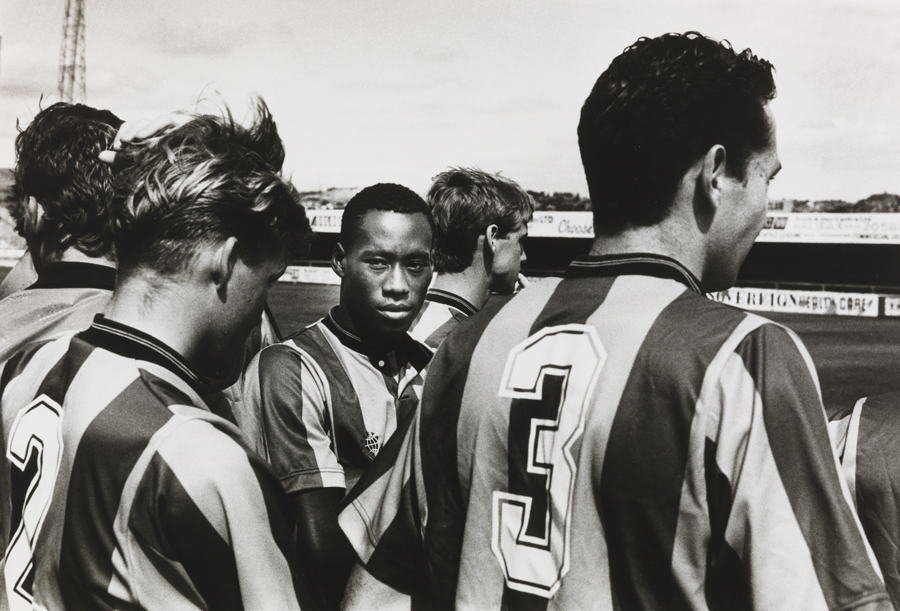
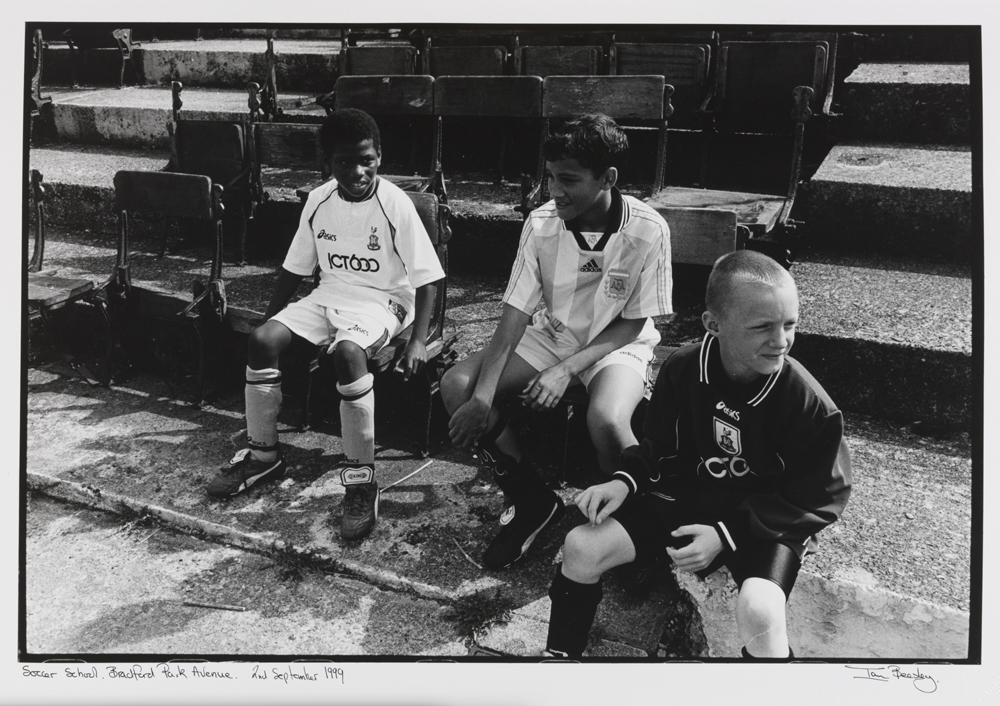
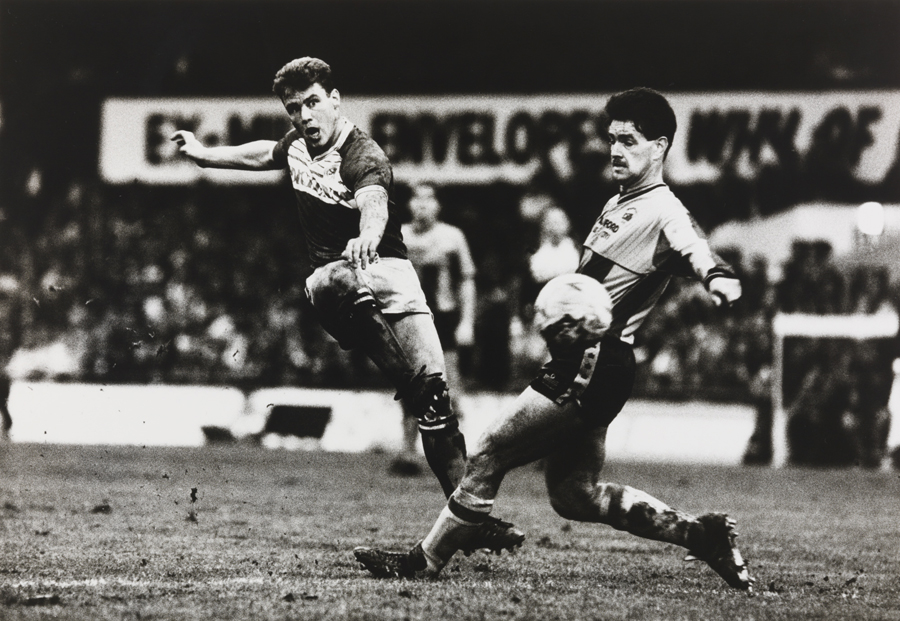
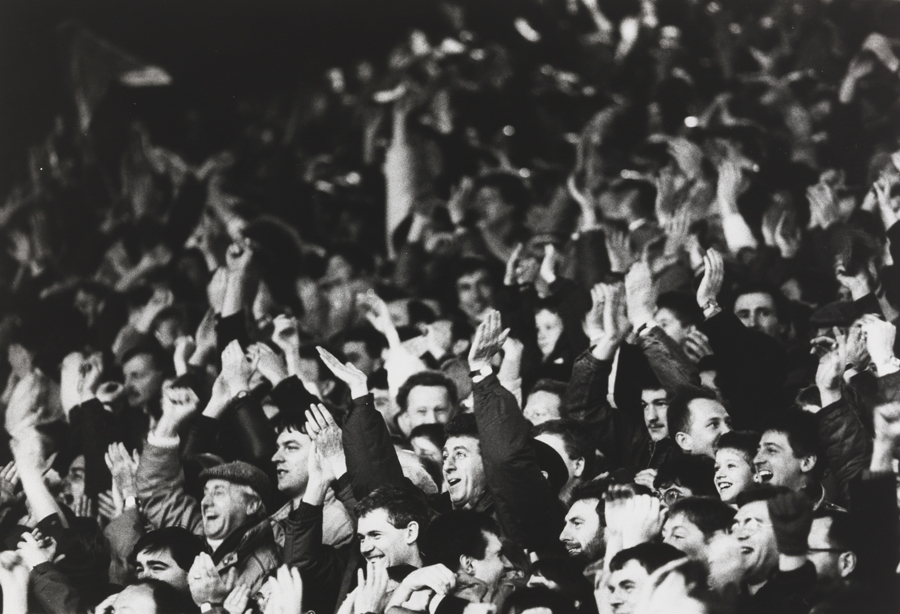
Brad Mangin – Sports Photography
Brad Mangin
Brad is actually a sports photographer but as my theme is identity and place and that my model is my brother playing football to symbolise his idea of valued place to portray his hobby I thought that looking at a bit of sports photography would be great.
Bio:
Brad Mangin is a Bay Area freelance sports photographer. Mangin has done eight cover shots for Sports Illustrated. Mangin graduated from San Jose State in a degree in photojournalism. He was born in 1965 and is now age 54. Mangin is known for his photographing of Major League Baseball for clients like Sports Illustrated and Major League Baseball Photos since 1987.
The reason i have chosen Brad Mangin to study is because it links well with the idea of identity and place. He chose to place himself in areas of the game to capture action shots like some of the examples before. This links well with my idea as im doing sports as part of the identity of my model. I’ve also decided to use the times before and after the games as almost like a before and after to capture the tiredness and the determined facial expressions of the individuals.


![]()


Having looked at Brad’s work, I have chosen to go down the lines of social identity and enviromental portraits. To be able to achieve sports photography,
However having reviewed over more photographers that base around the area of Sports photography i have decided that i do not just want to stick to the idea of just photographing my brother playing sports in a field but to capture his passion for football. I am going to portray a series of images that rather than just being seen as a simple images with no context there will be a story of a boy who aspires to be a famous footballer and play for teams like Manchester United and Portugal, not to mention his slight obsession with Ronaldo, whom he sees as a role model.
Case Study:Barbara Peacock:American Bedroom-Mock:Identity and Place
Barbara is an American photographer/photojournalist. She is one of five recipients of the Getty Images annual Grants for Editorial Photography programme, which gives photojournalists an award of $10,000 as well as the agency’s support in pursuing projects of their choosing. American Bedroom is an ongoing series of portraits in which she explores the complexities of contemporary American life. American Bedroom is a cultural and anthropological study of Americans in their private dwelling; their bedroom. The nature of the project will be portraits of individuals, couples and families that reveal the depth of their character and spirit.



https://www.theguardian.com/artanddesign/gallery/2017/sep/12/american-bedroom-by-barbara-peacock-photographic-portraits
My Concept:
Barbara’s project on American Bedrooms has influenced me to do a similar idea for the ‘Place and Identity’ mock, in which I am going to take photos of people in Jersey in their bedrooms. I want to be able to explore the inside private space of the people on this island and how their bedrooms reflect their self.
I was also influenced by the media theorist, Goffman who came up with the concept of ‘The Representation of The Self in Everyday Life’ which is the idea that we all have a ‘back and a ‘front’ self, the front is the one we let everyone see and we want everyone to see and the back is the one that is private to us that we conceal from others. I see a bedroom as a persons ‘back’ self a place or privacy and self expression, the actual person is the ‘front’ self, they leave their bedroom everyday to face the public world they dress themselves up to make an impression on others. I also want to explore how bedrooms change as people age, my impression is that the older you get the less expressive your bedroom becomes and it becomes more neutral and simple. Also it will be interesting to see how the dynamics of marriage and sharing rooms changes a persons private space.
Analysis Of Peacock’s Work:
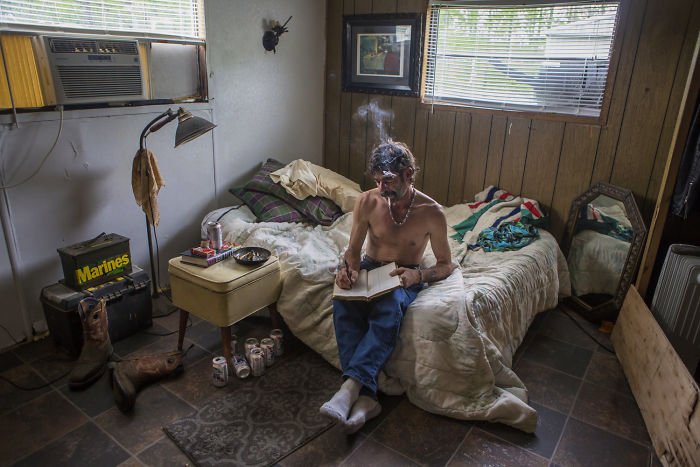
Barbara’s concept is simple yet complex because the idea of taking a picture of someones bedroom seems easy but it’s the people she chose to take pictures of it intriguing. For instance in the image above there is a middle aged looking man with a cigarette, no clothes on and a reasonably bare room. At first glance it’s just a picture of a man in this room but it tells a story, such as the fact that he smokes inside might mean he lives alone and this bare chest also suggests this. Also the lack of feminine touch indicates that he doesn’t have a women in his life, as well as that the bed being up against the wall makes me think that he doesn’t have a partner because most couples have their beds in the middle of the room so that it is accessible for both of them. The number of beer cans suggest he is a heavy drinker and the ash tray full of cigarette buts indicates he is most likely addicted to nicotine. The lack of portraits on the wall suggest he is a lonely man, possibly no kids and his parents maybe have pasted away. The boots and tool box suggest he could be some sort of builder or construction worker, this links to the number of beer cans and how working on construction sites means you are around males mostly and going out for a drink it a key aspect of workmen culture.
Barbara uses natural lighting to capture the true lighting of the room as this can indicate to a persons identity for instance some people much prefer having the blinds up or being in rooms with less light, which could suggest they are shy or constantly tired or are more of an evening person. The colours are neutral which creates a warm tone which is contrasted with the dingy feel of the room and how some light coming through is blocked by a yellow object which creates a dirty looking light, this mirrors the old cans lying on the floor and ash scattered on the bedside table. Although the room feels dirty it isn’t messy, the lack or furniture creates a repetitive structure which ties in with the idea that the mans life is very structured, work, smoke, drink, sleep and how it lacks the excitement of family and love. On the other hand the thing that sticks out the most visually in this photo is the notebook and how it seems out of place and you would think that he is not the type of man to write, this empathises how we judge people to quickly on their looks (front self) and it’s when they go home that they become their real self.
Introduction-Mock:Identity and Place
Identity is the fact of being who or what a person or thing is. Place is linked to identity as it shapes a persons characteristics, for instance living in a slum with no money can make a person more appreciative towards the little things in life and have more empathy towards others. Whereas people who live in places like Beverley Hills in huge mansions don’t value money as much they spend it likes there is an unlimited supply and generally look down on others with less money. Also places like Russia have extremely high levels of domestic violence and alcoholics, which has been a consistently high rate for centuries now, which says something about the culture in Russia.
Gender Identity is the personal sense of one’s own gender. Gender identity can correlate with assigned sex at birth, or can differ from it. All societies have a set of gender categories that can serve as the basis of the formation of a person’s social identity in relation to other members of society.
Cultural Identity is the identity or feeling of belonging to a group. It is part of a person’s self-conception and self-perception and is related to nationality, ethnicity, religion, social class, generation, locality or any kind of social group that has its own distinct culture.
Social Identity is the portion of an individual’s self-concept derived from perceived membership in a relevant social group.
Geographical Identity is an individual or group’s sense of attachment to the country, region, city, or village in which they live.
Political Identity– refers to political positions based on the interests and perspectives of social groups with which people identify. Identity politics includes the ways in which people’s politics are shaped by aspects of their identity through loosely correlated social organizations.
Lack of / Loss of Identity-An illness, injury, and even aging can take a serious toll on the physical self, leading people a physical loss of identity that can sometimes be accompanied by a loss of self-worth.

Identity – Michalina Woźniak
The theme I will be exploring is the lack/loss of identity, and i’ll be looking at multiple different photographers to gain ideas to add to my final piece.
Michalina Woźniak is a self-taught Polish photographer and has been taking pictures since 2009. In her Identity Series, she focuses on the loss/lack of identity and portrays it through dark and gloomy images.
I’m a self taught 21 y.o. photographer based in Lublin (Poland). I’m in love with deep and dark emotions, the more disturbing they are, the more powerful they’re for me. I need those strong connections between me and another worlds (creations) to FEEL it and to be able to touch it somehow.
This story is about Identity and alter ego, but everyone can find whatever he/she wants here. I don’t want to tell you what’s it all about, I want you to look for it and to feel it.
Photography is like a poem – it’s all about the impression and impulse. You need to feel it, to find the moment.
– Michanlina Wosniak
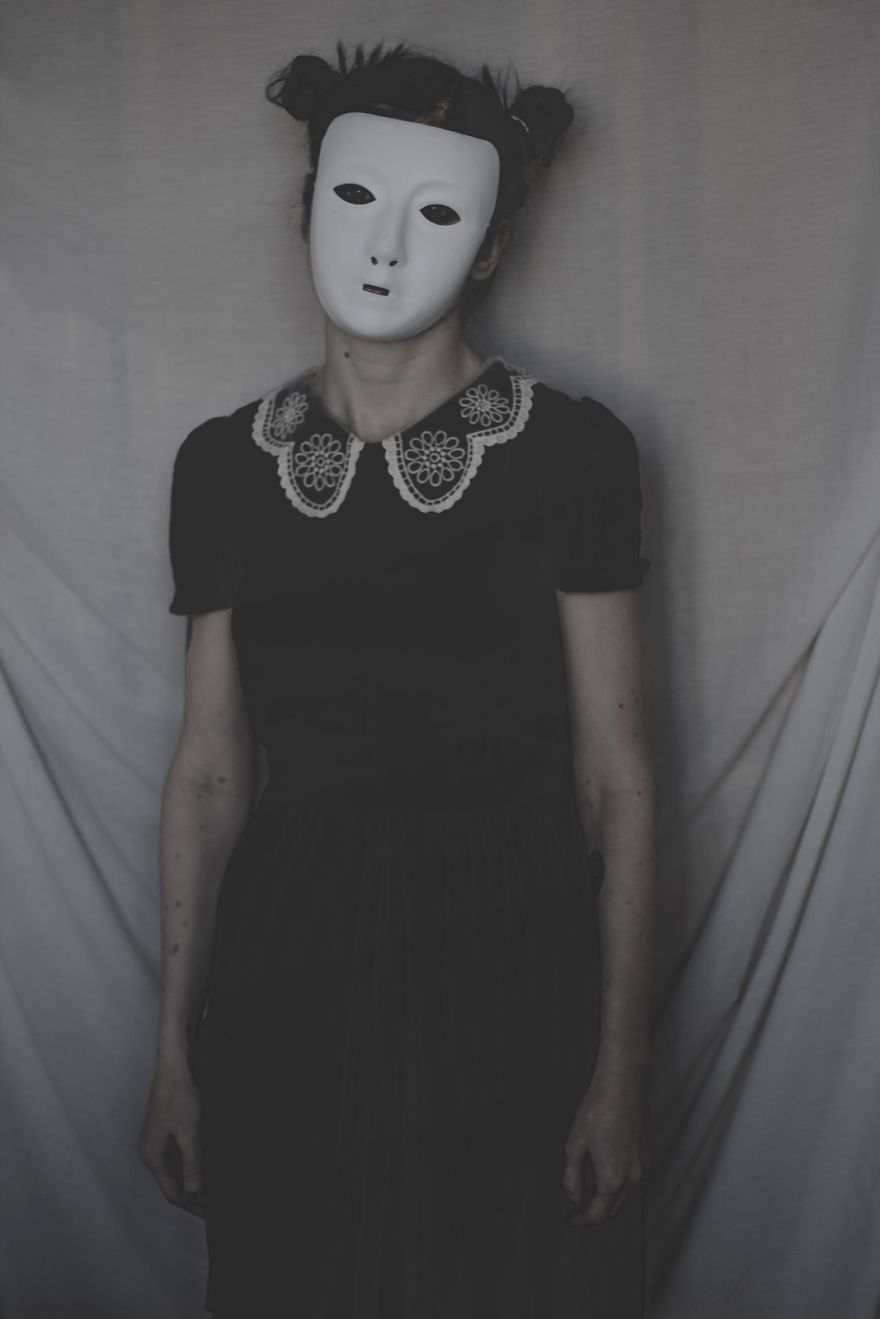
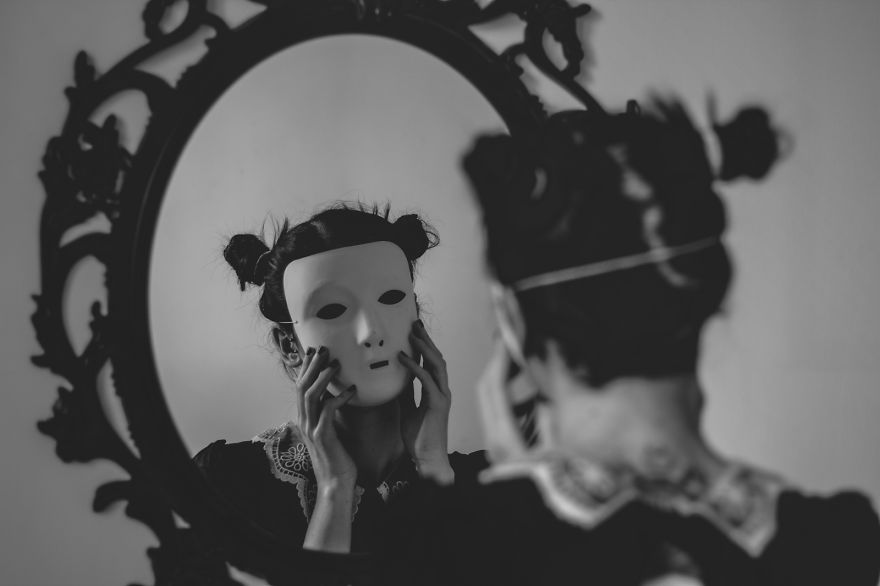
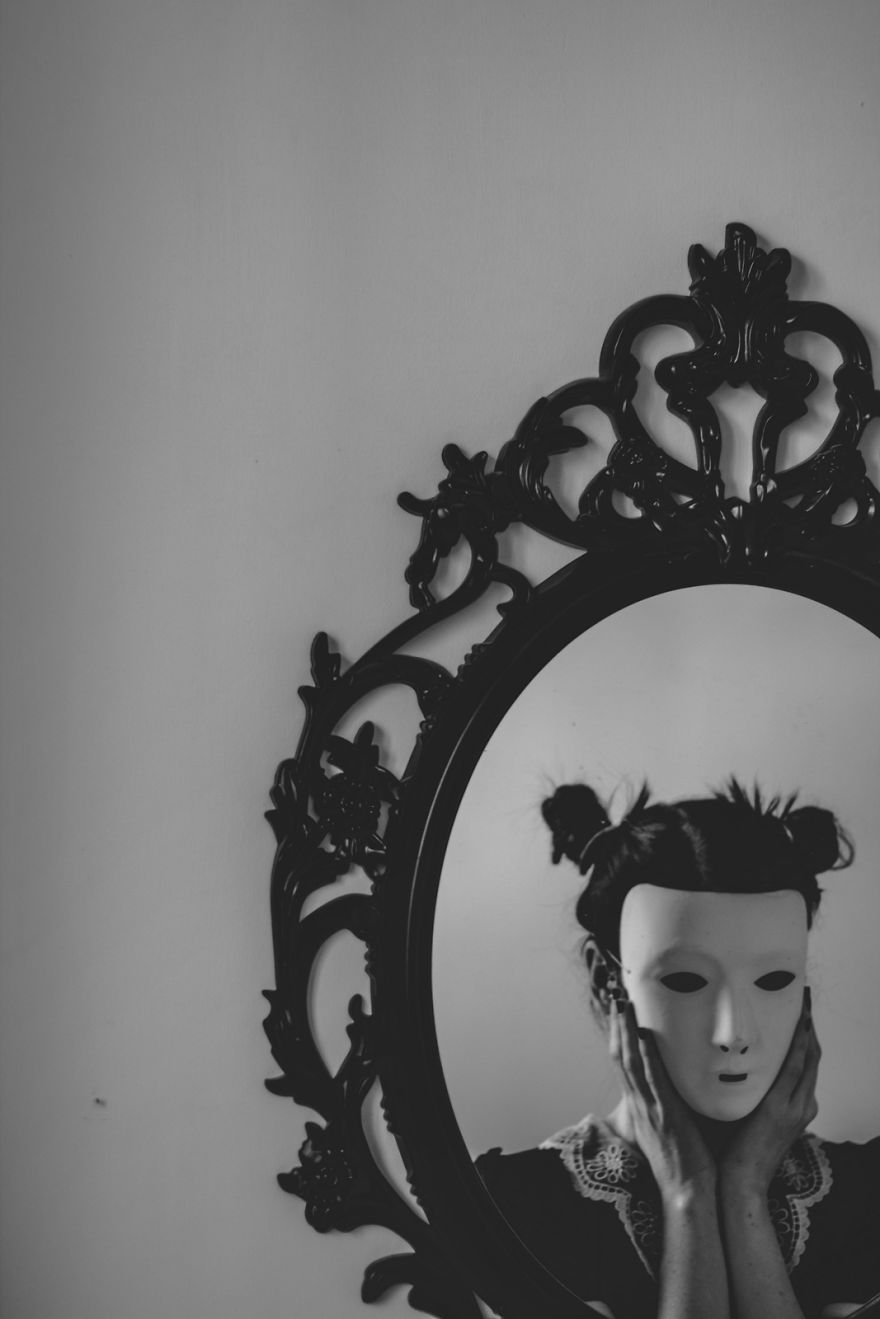
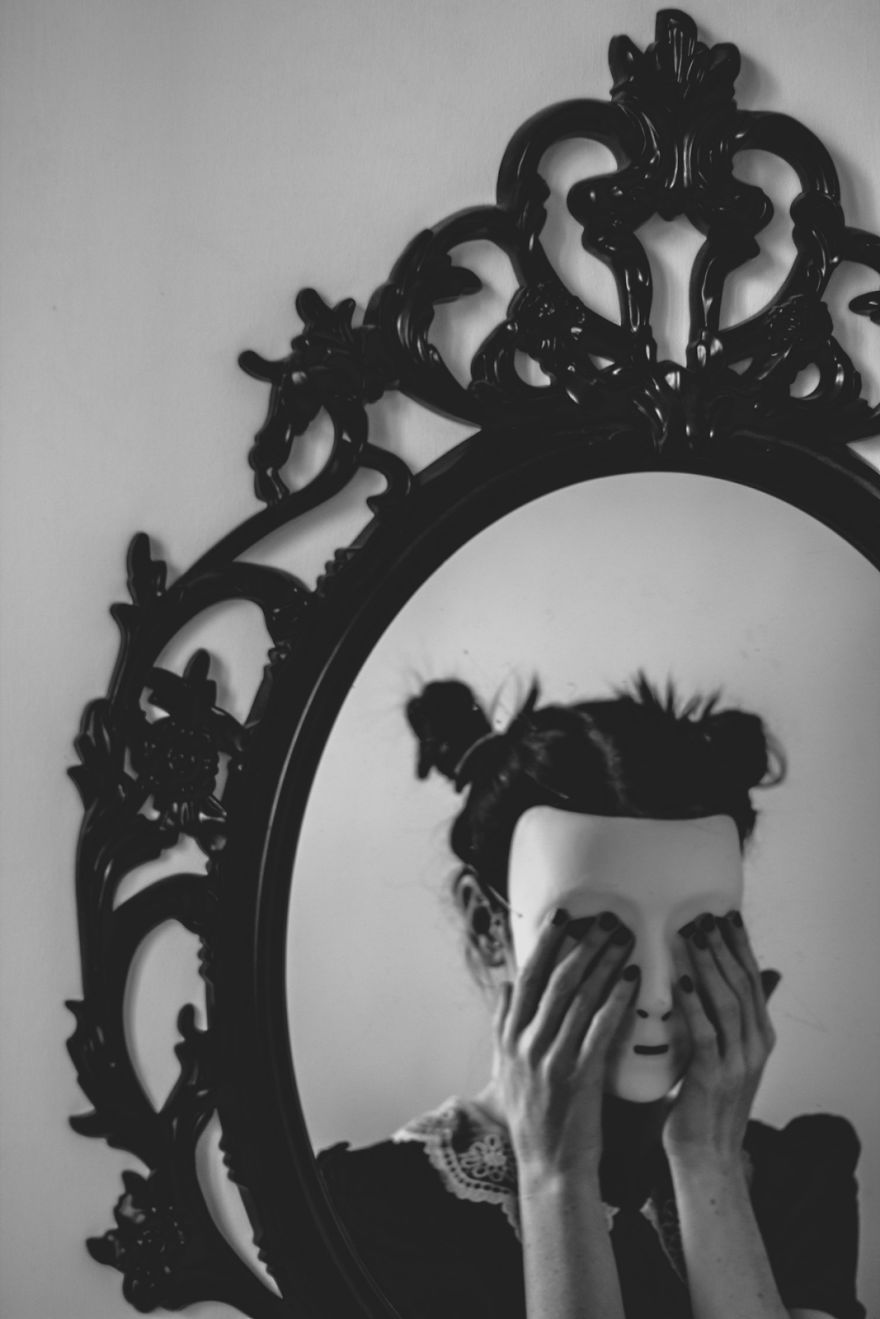
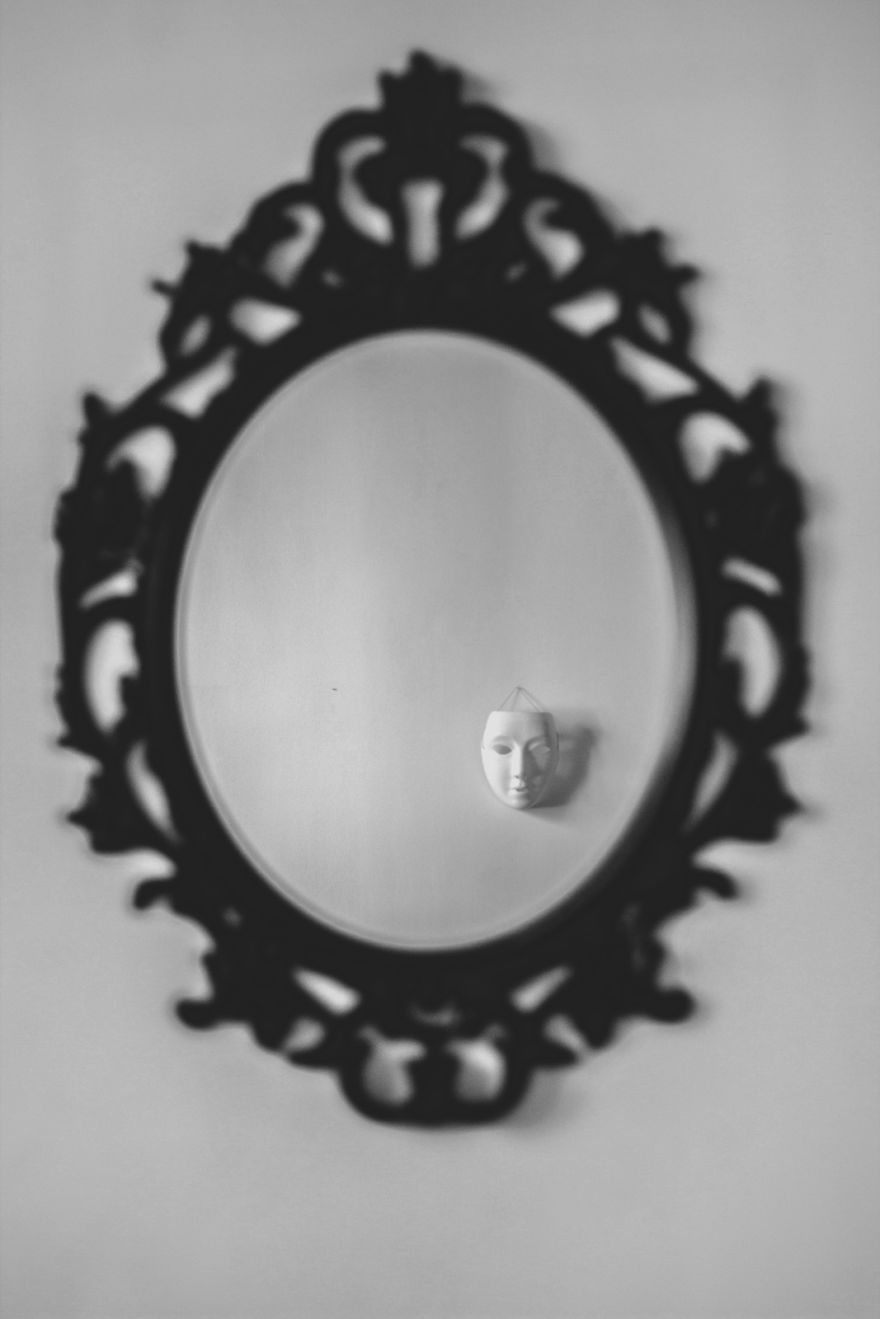
Contact sheets:


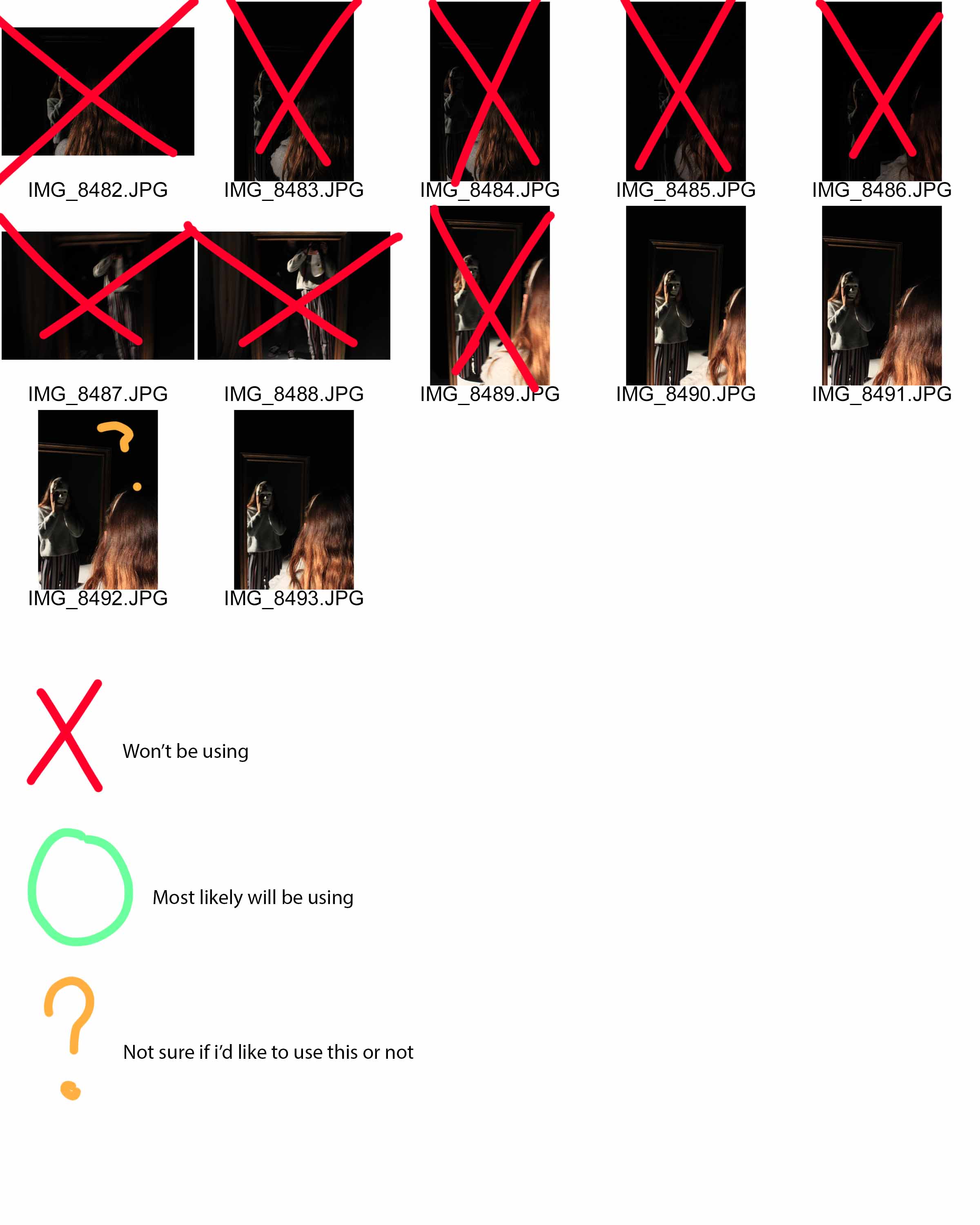
For my theme, I focused on the aspect of a masked face, and not being able to see the identity of the model in the picture. I also tried replicating pictures done by Wozniak, of a masked person looking into the mirror, surface which gives off a reflection, or looking directly into the camera. These link to my theme of the lack/loss of identity as the face of the person is hidden, and them looking into the mirror with the mask on, touching their face as if in confusion or distress, suggests that they themselves don’t know who they are. I got my subject to do multiple poses for this project, looking right at the camera with the mask, touching their face with their hands, and looking to a mirror or reflection.
Chosen edits:

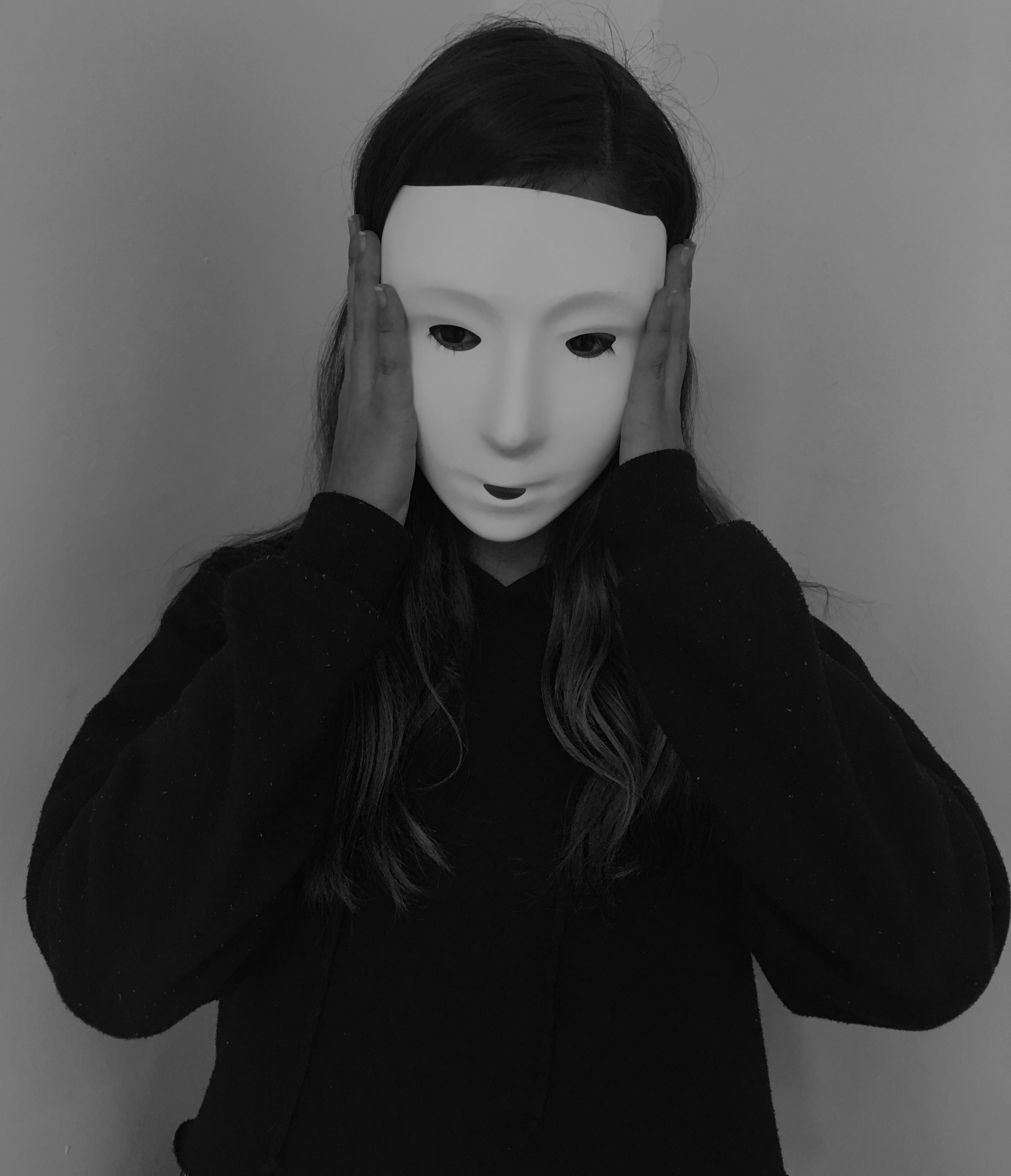
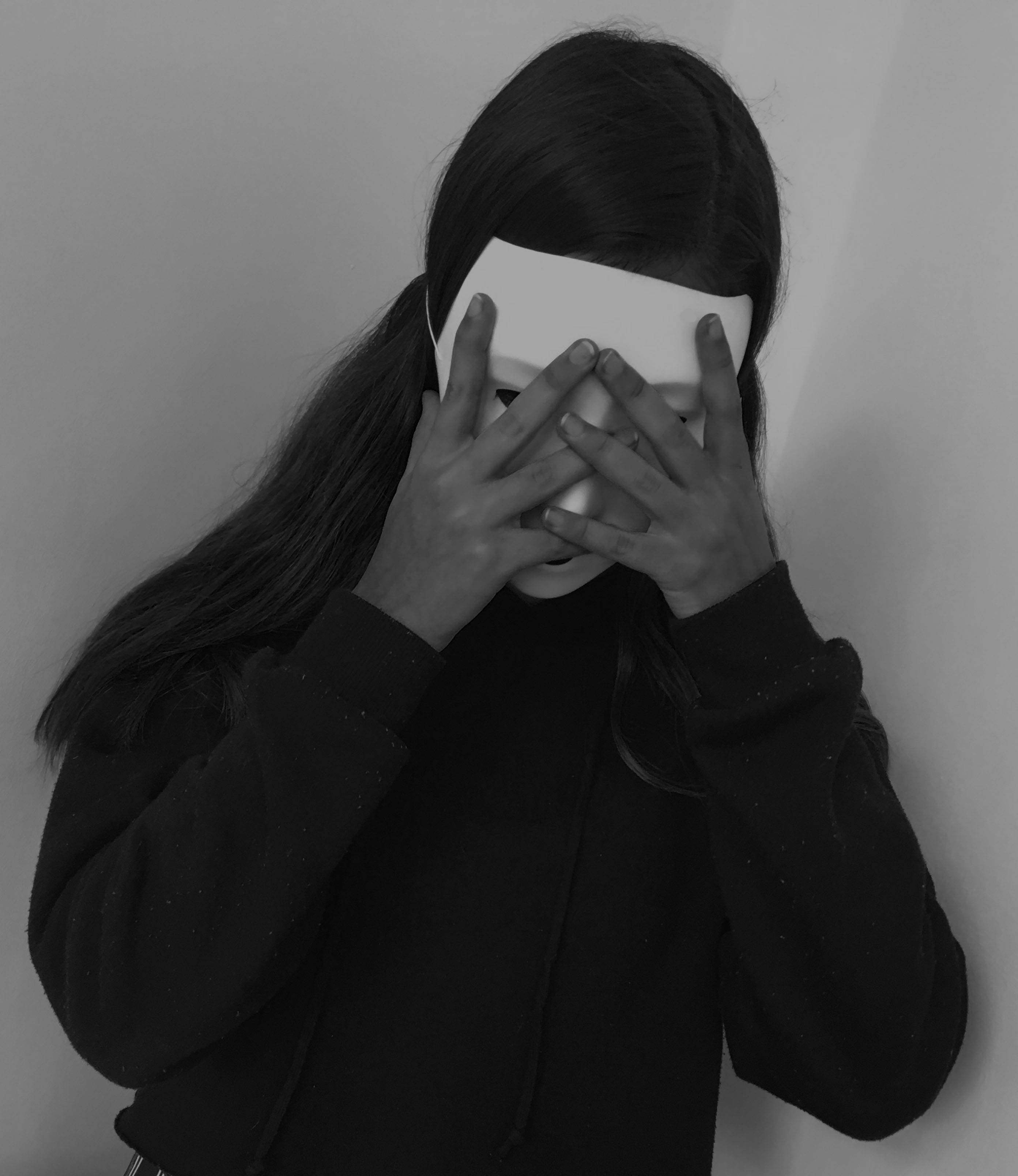
I chose these images because I believe that they relate to the theme of lack/loss of identity and portray Michalina Woźniak’s work successfully, with the masked subject and the eerie black and white setting. I think they also show a story, the first picture she seems normal, staring into the camera as if nothing’s wrong. Then in the second image, she’s touching her face as if she had just realised something, maybe the fact that she lacks identity. And in the last image it’s as if she’s in distress, her hands covering her mask as if she’s hiding away.
I like my final outcomes, they tell a story of someone who’s lost their identity and don’t know who they are, but I believe I could have taken more of a variety of images, with more mirrors, more poses and different people, including me. That would have defiantly increased the quality of this project.

